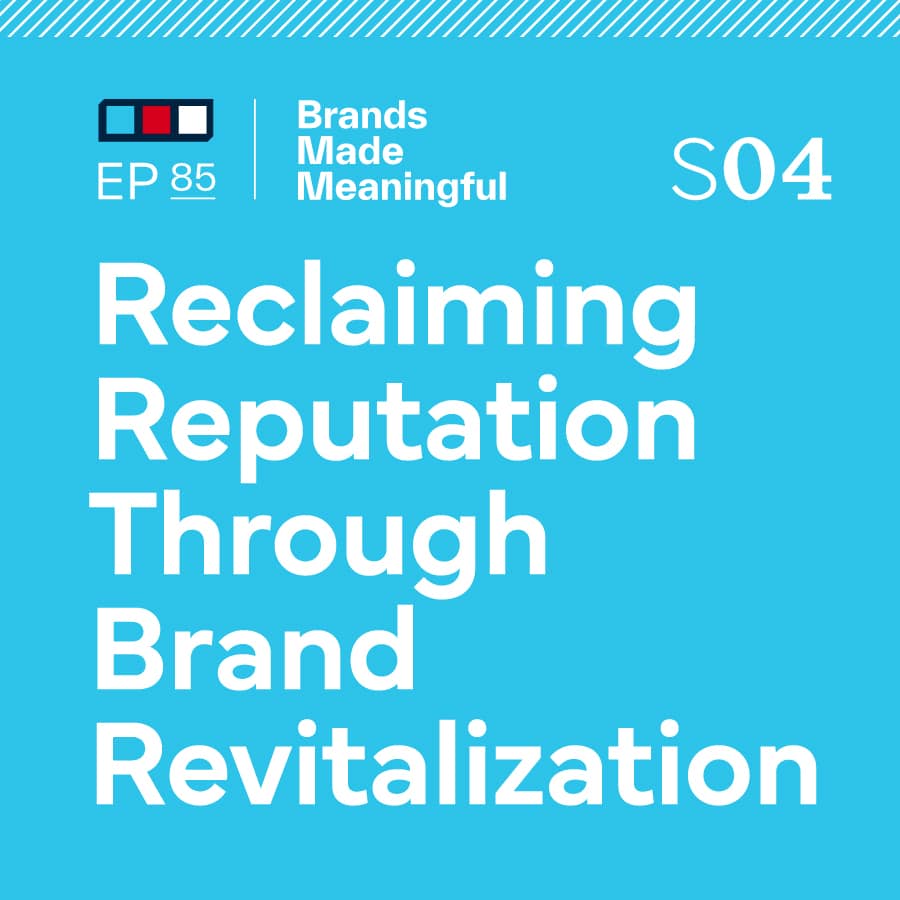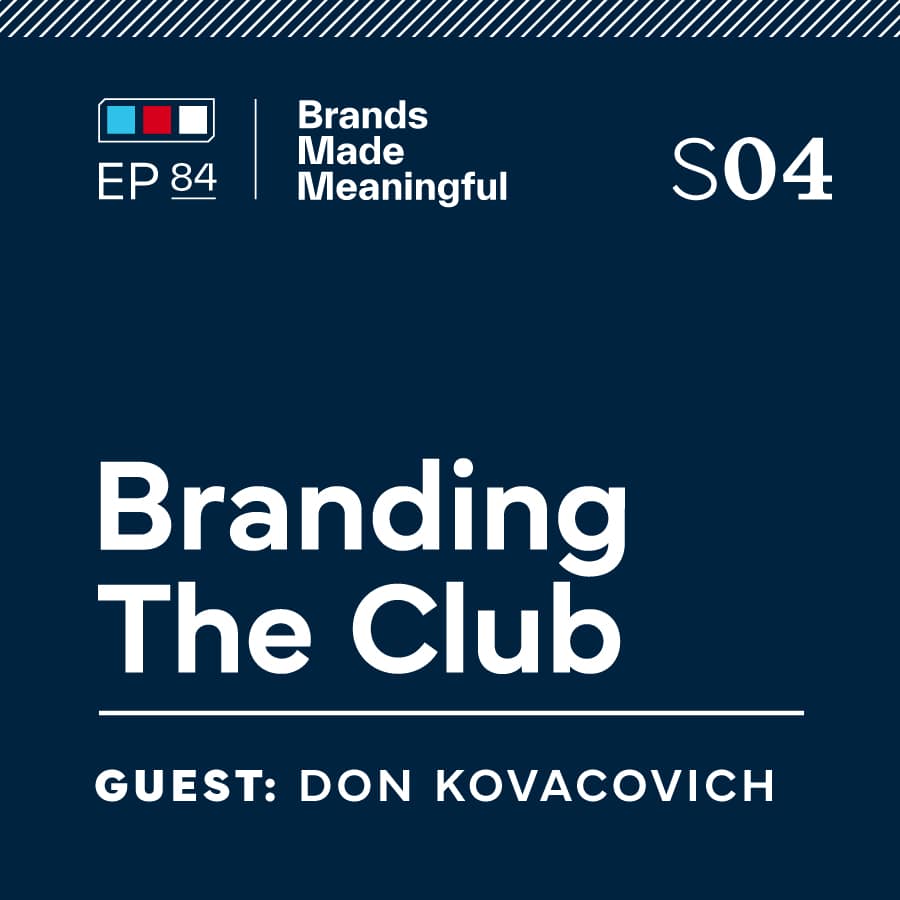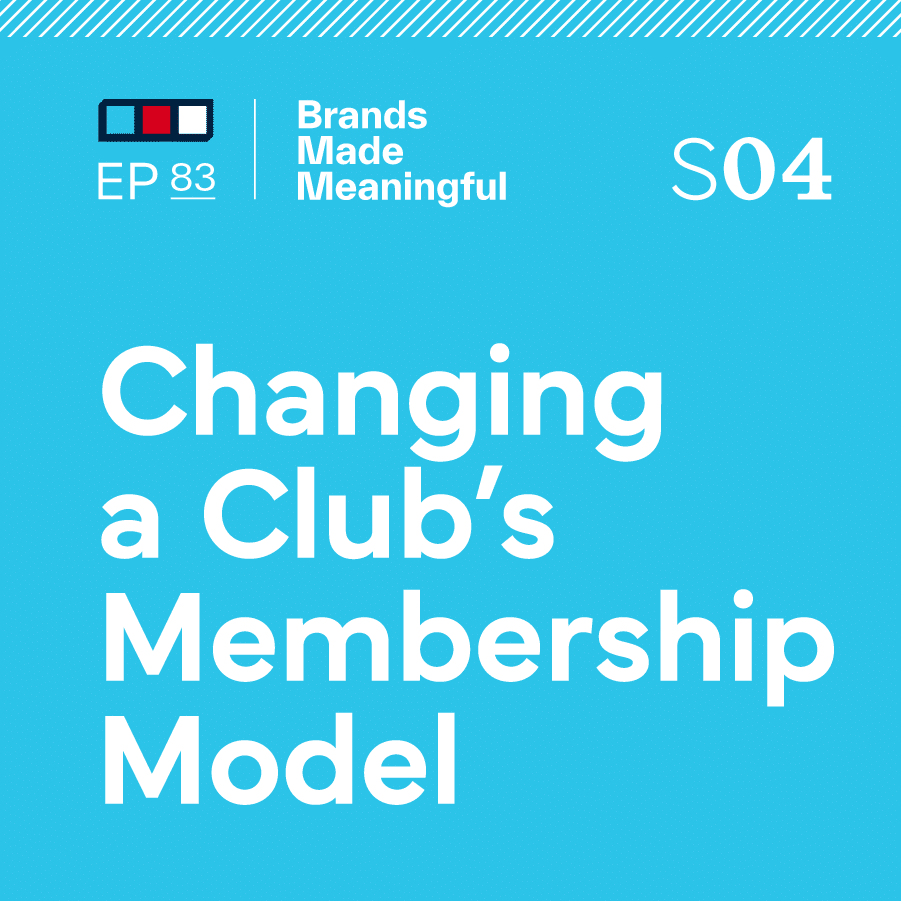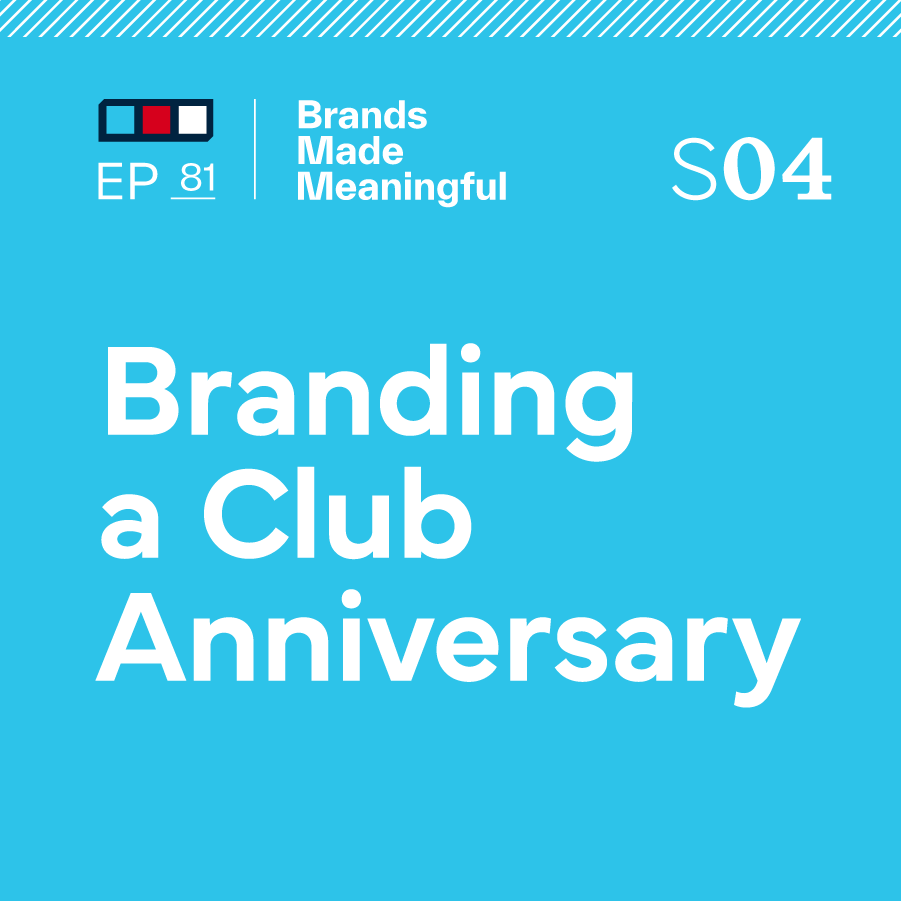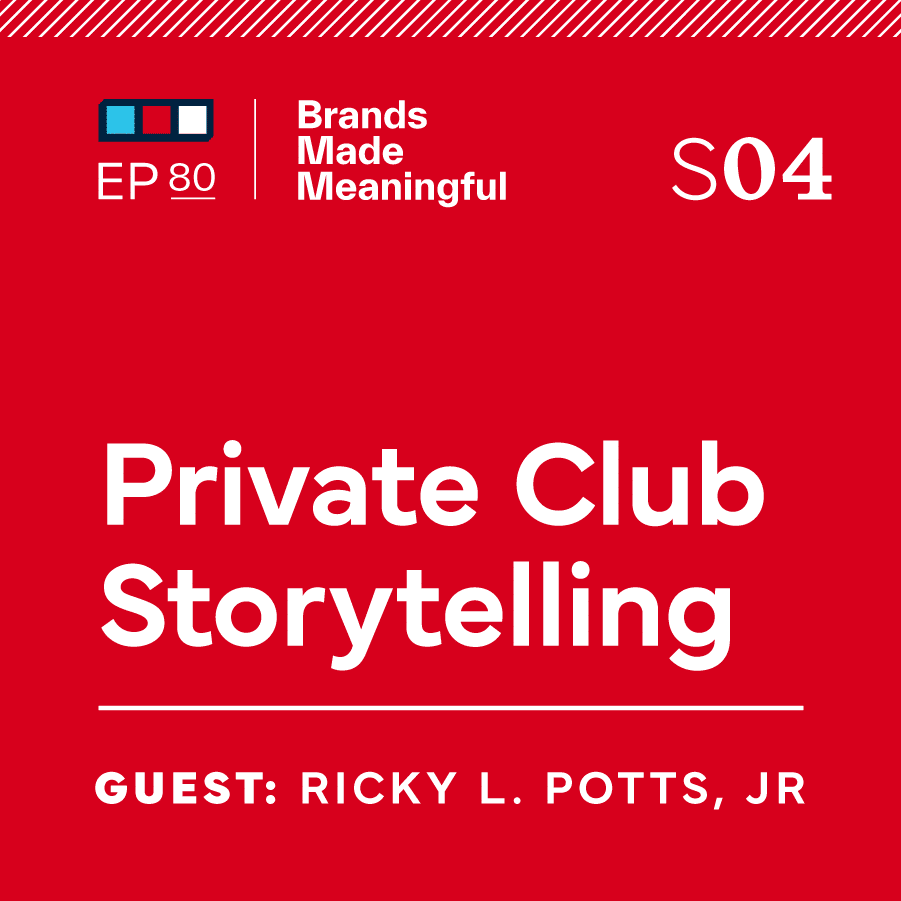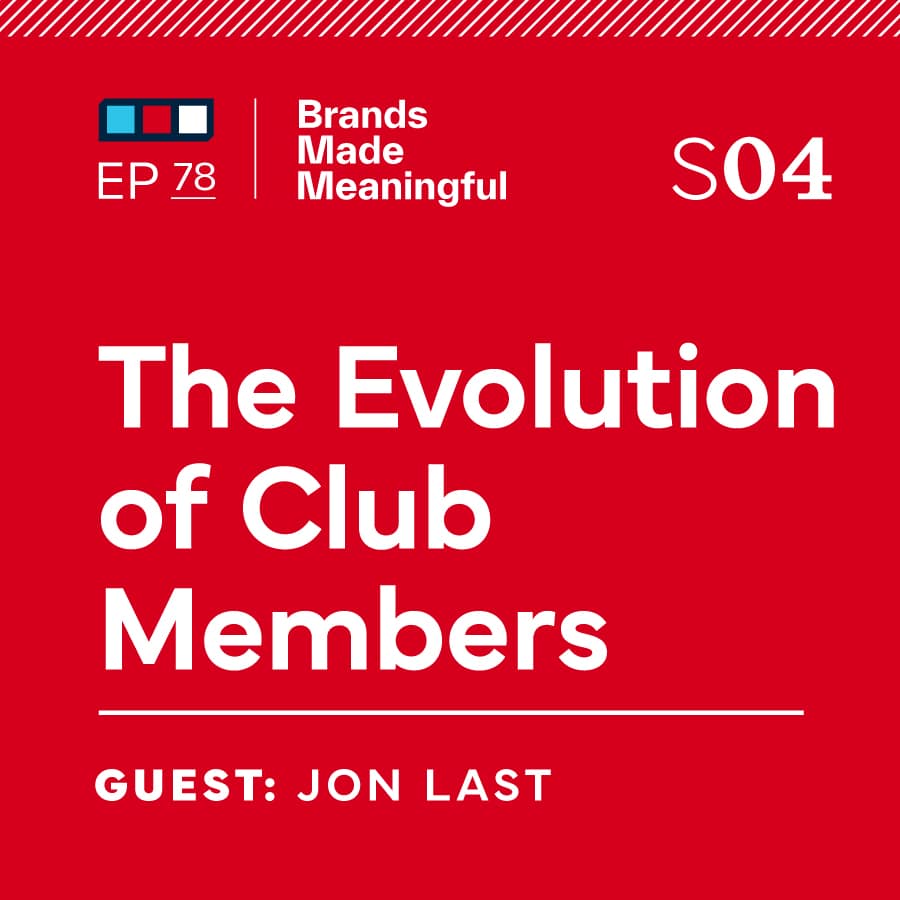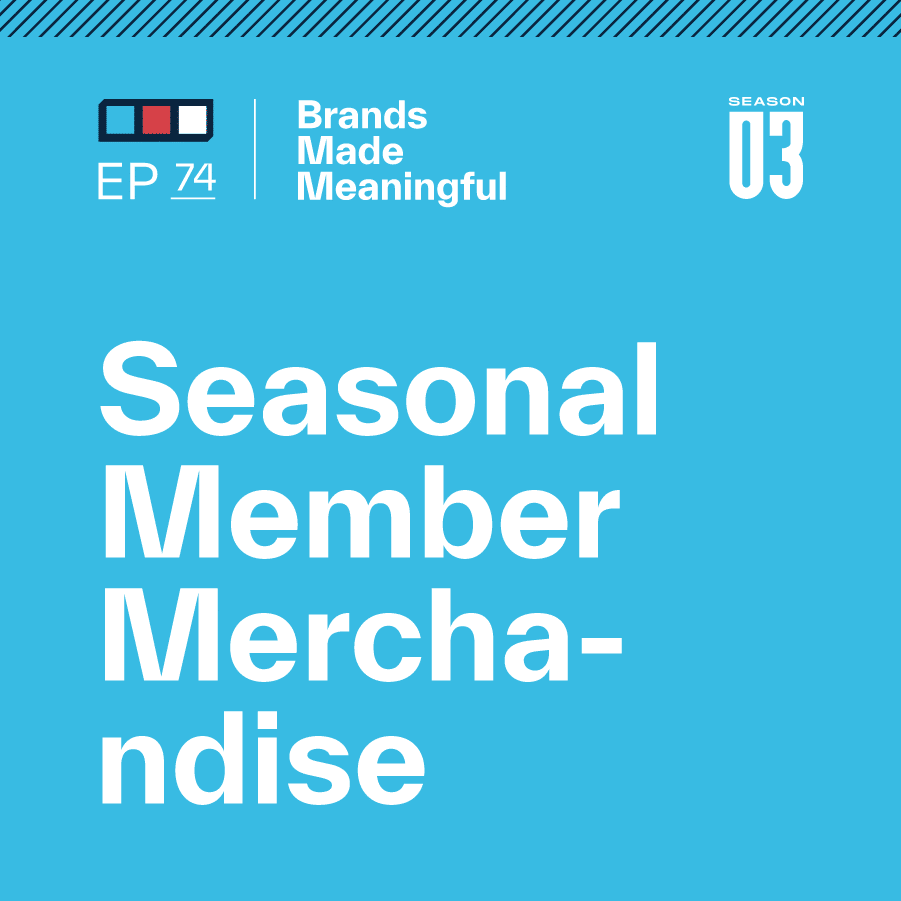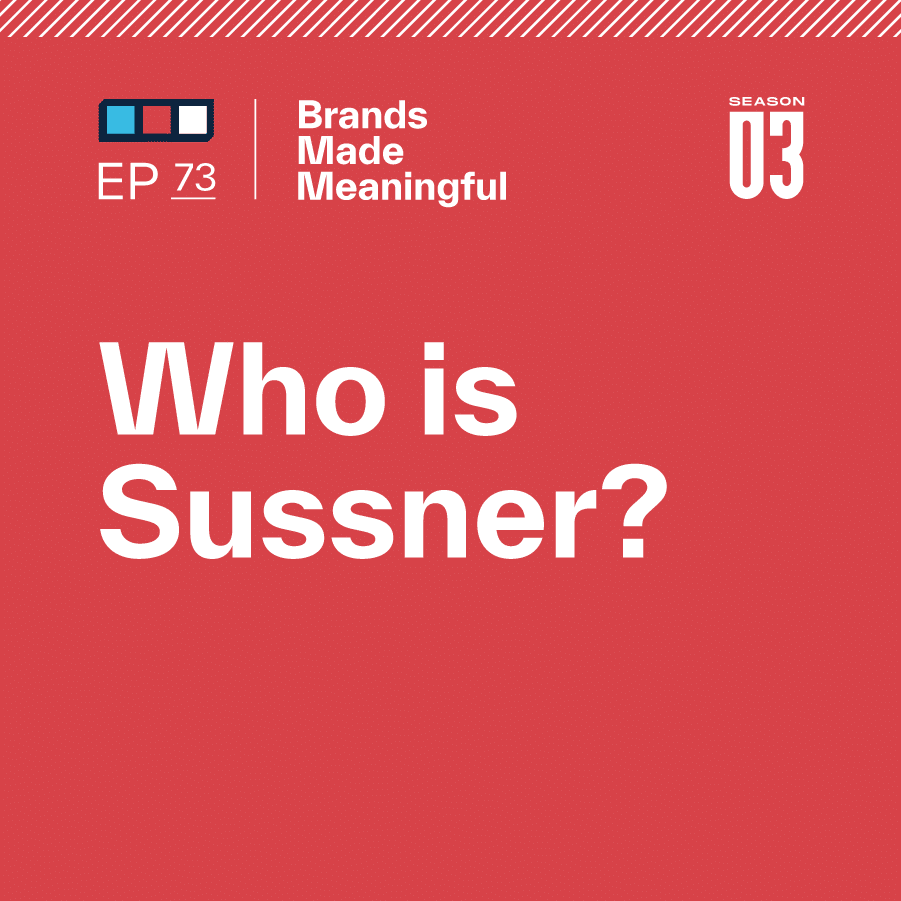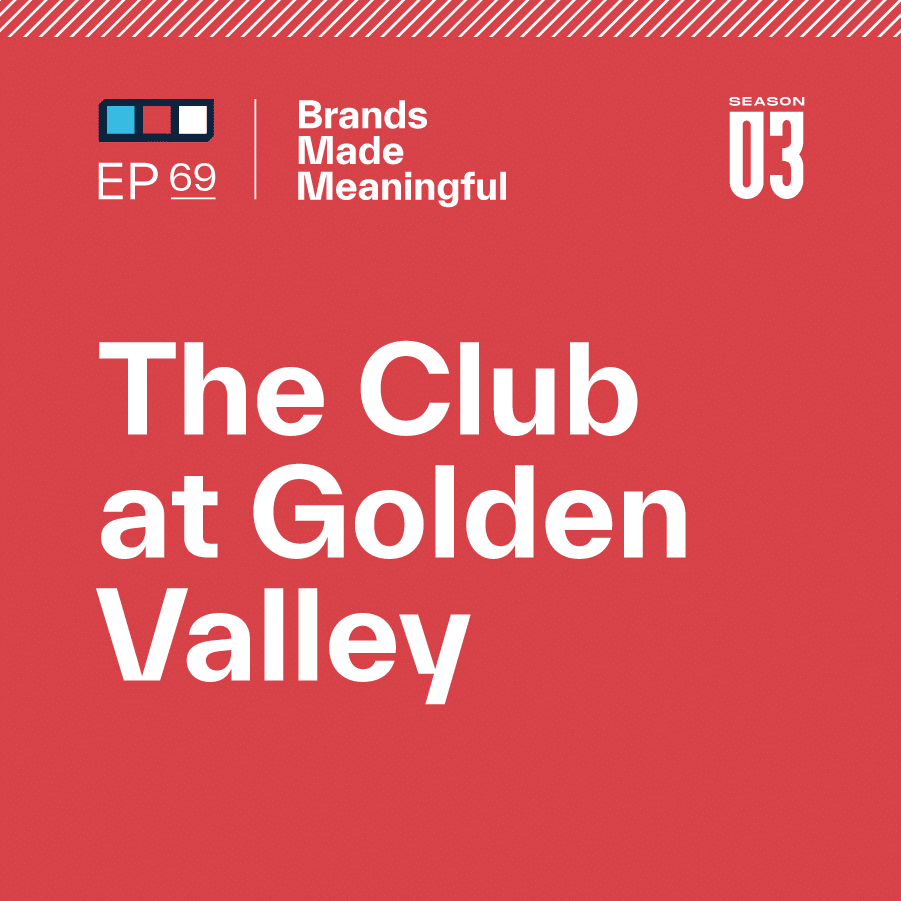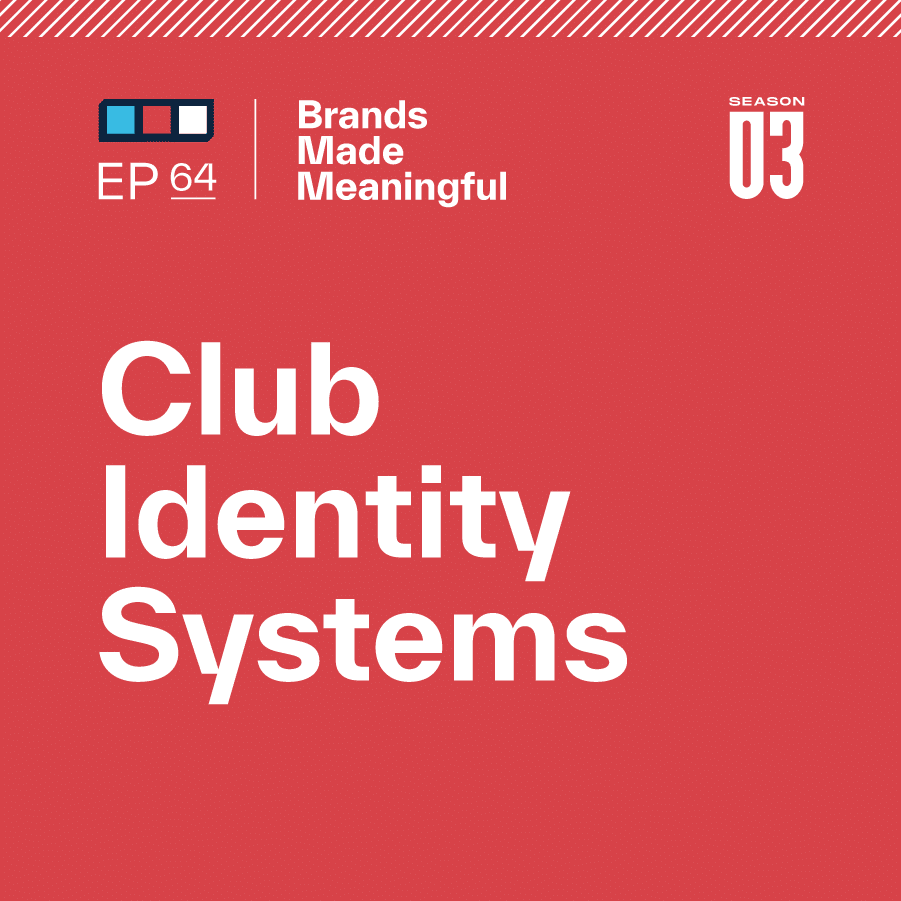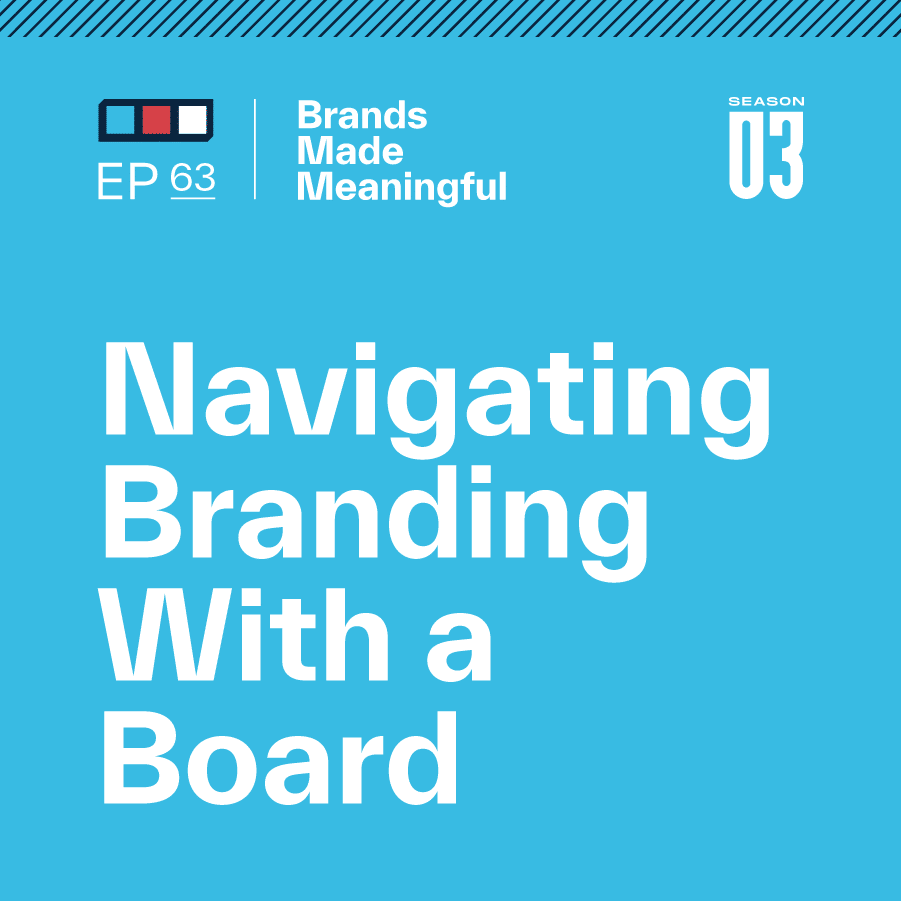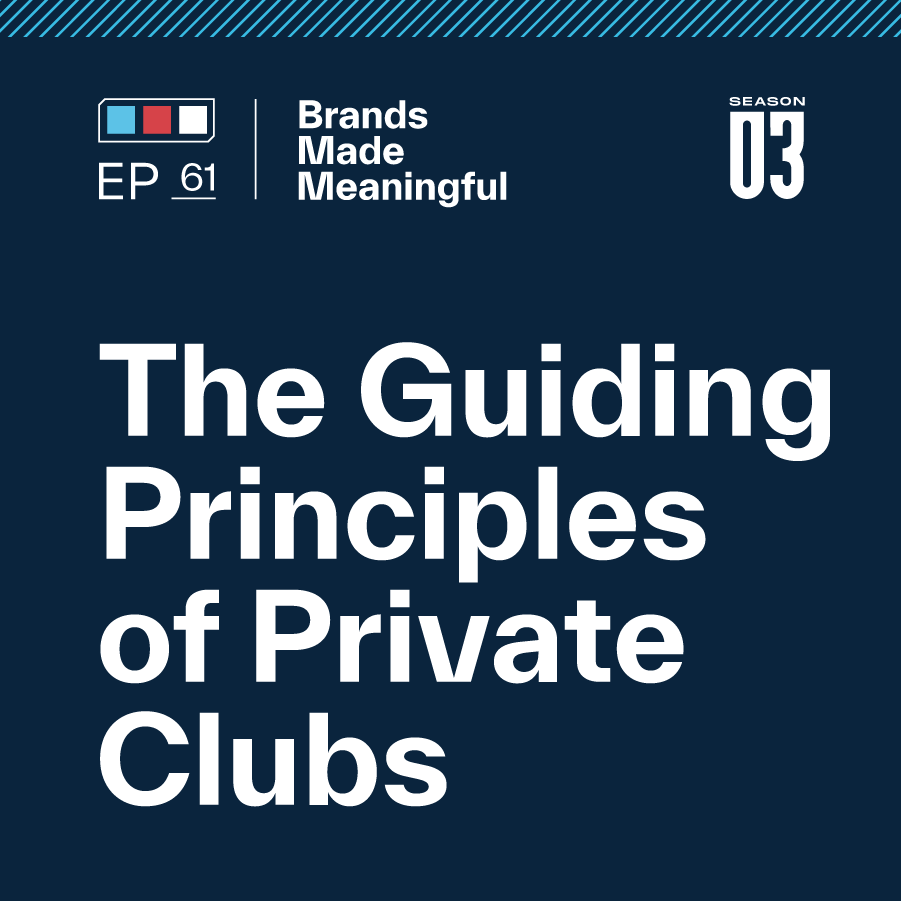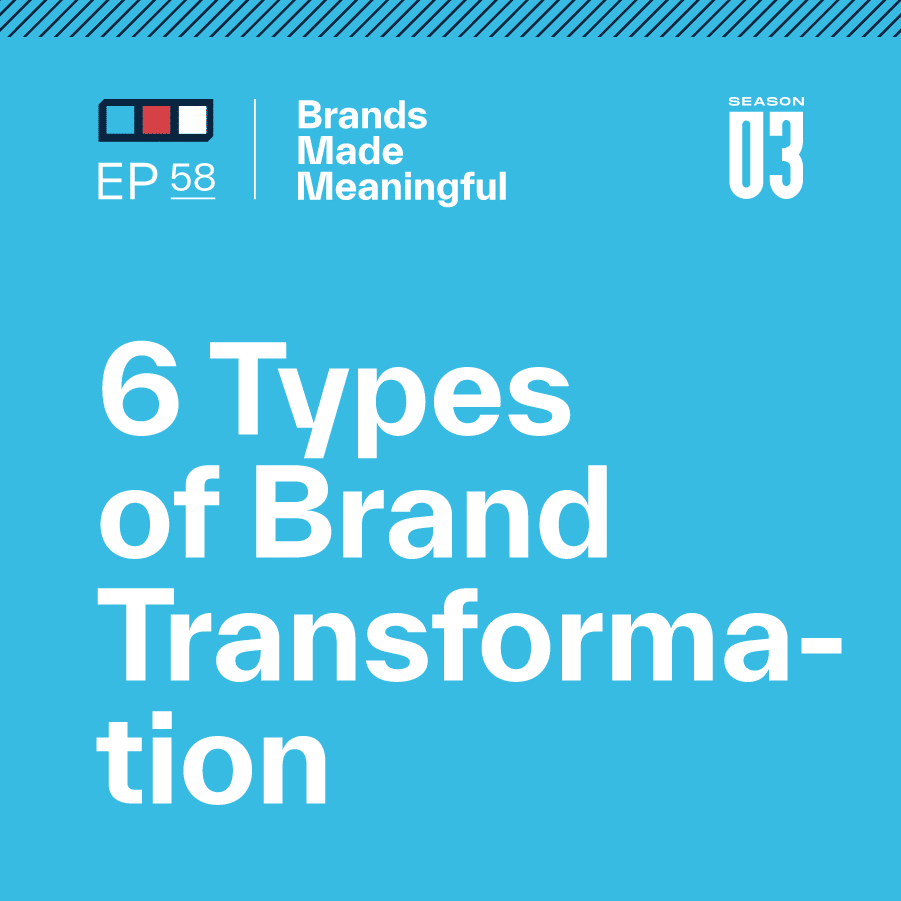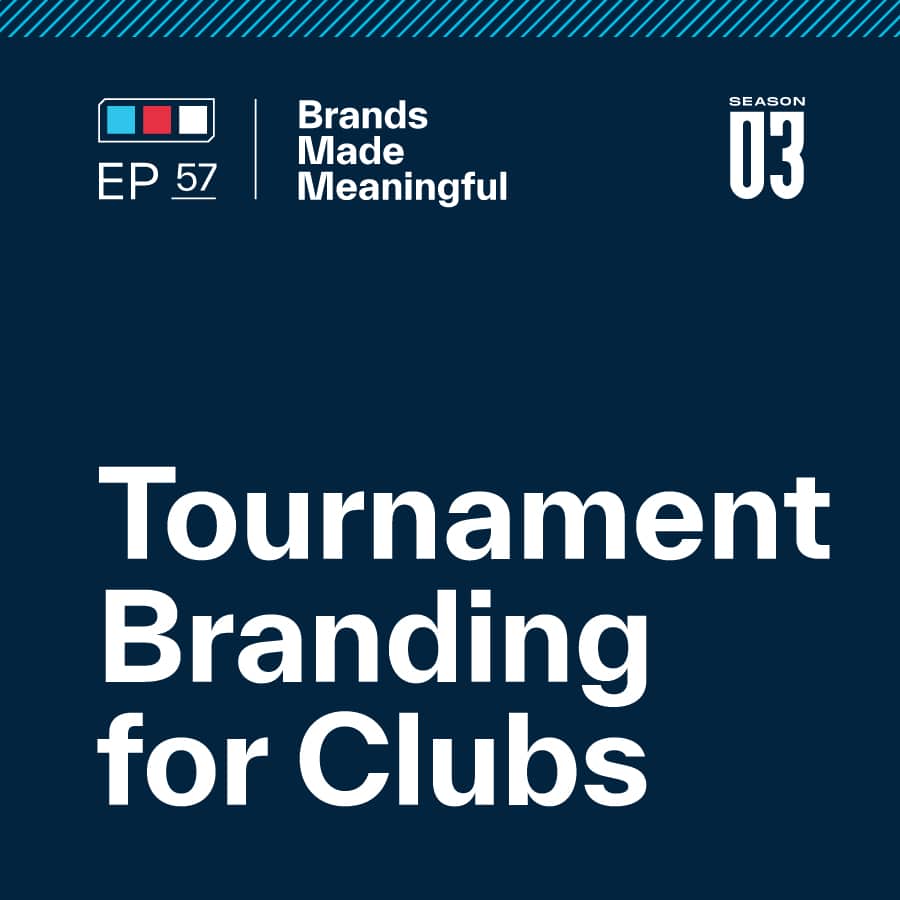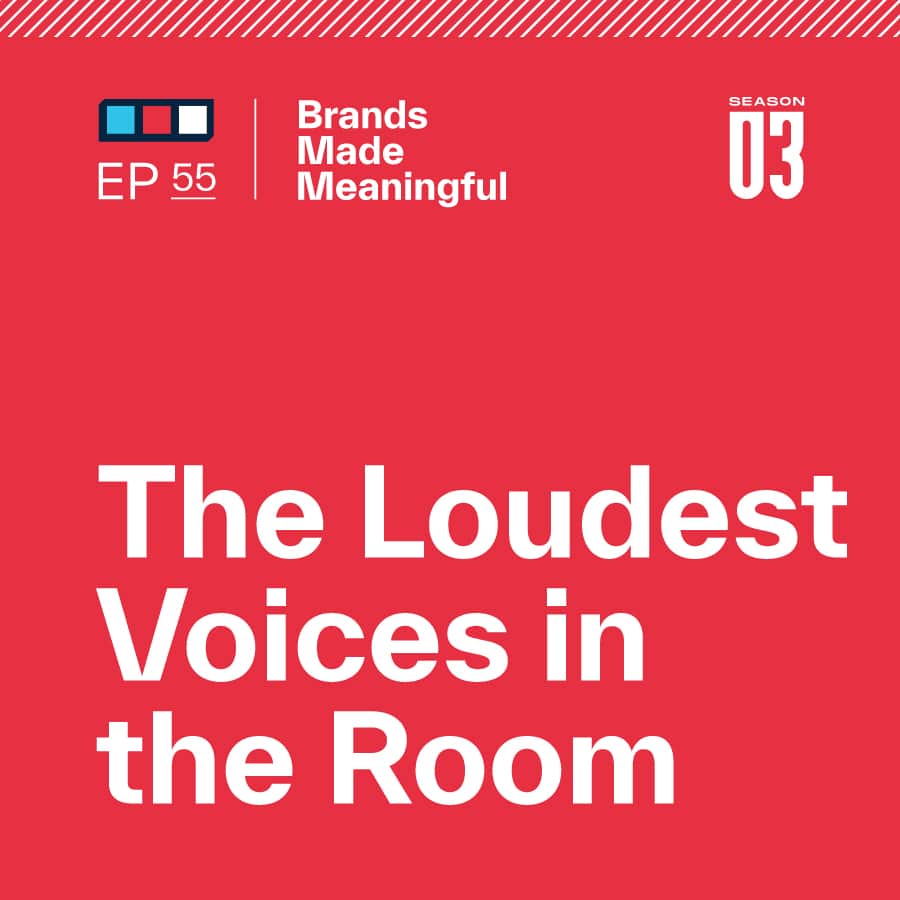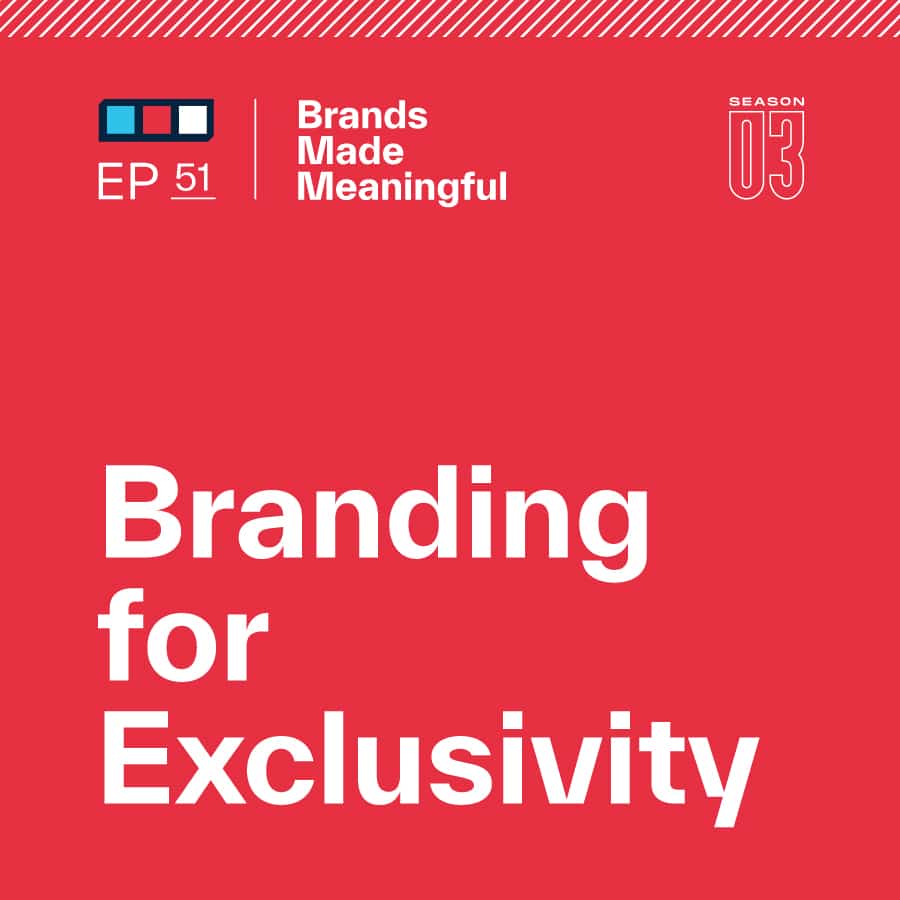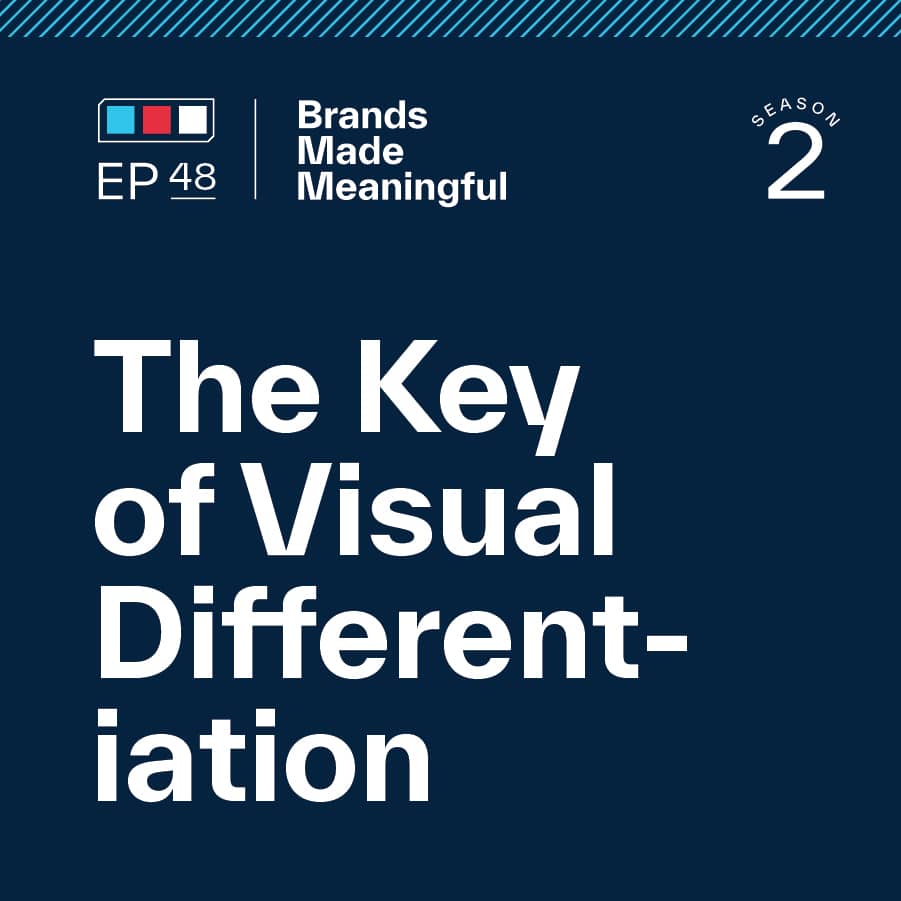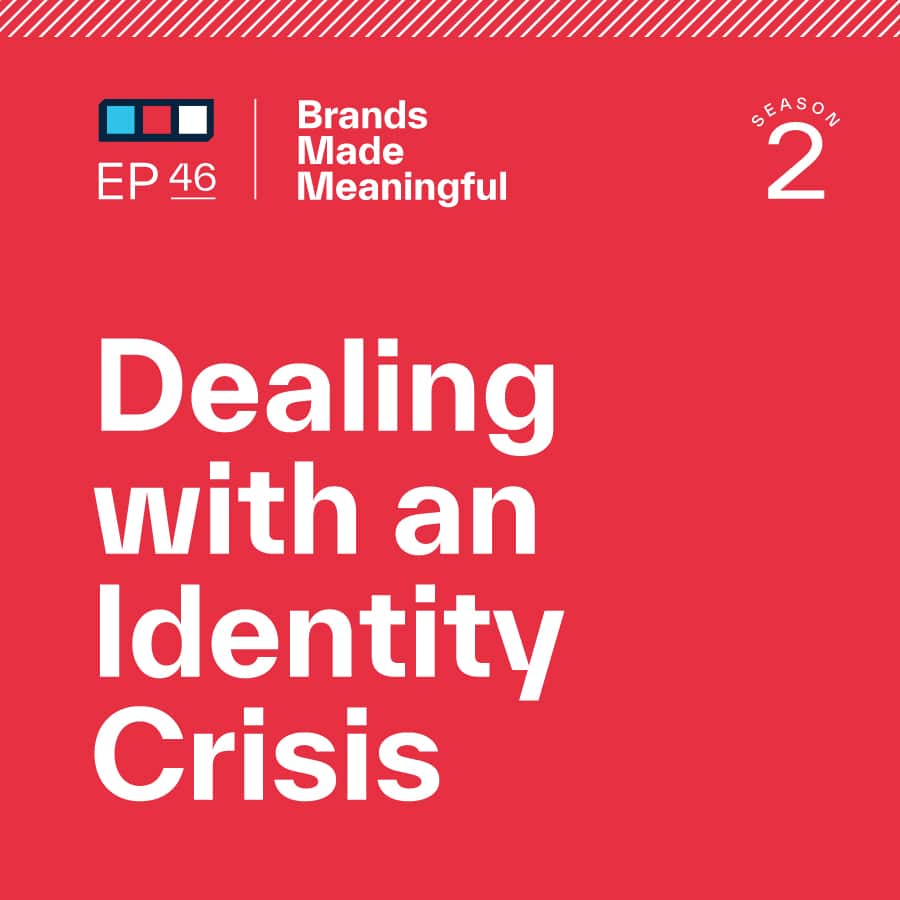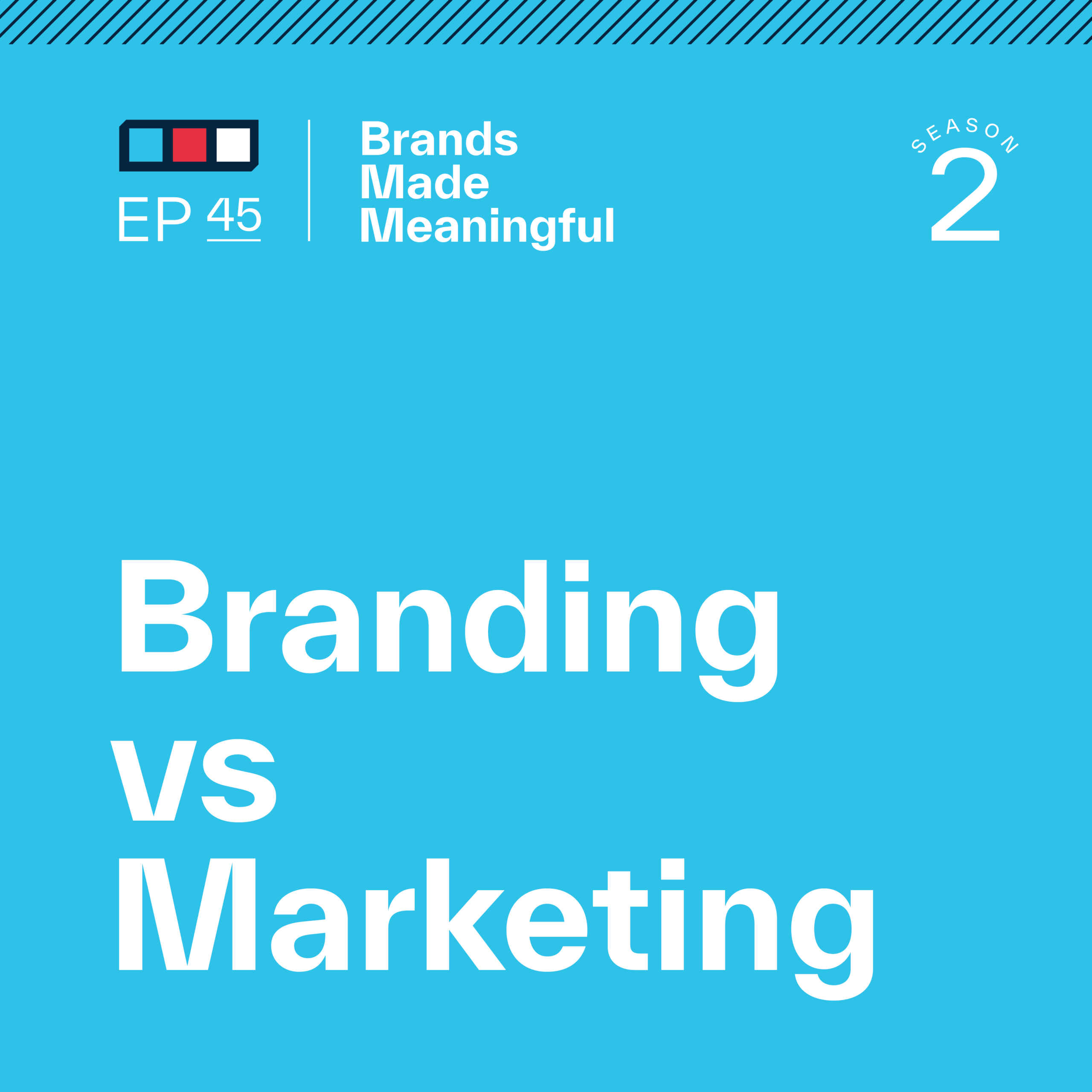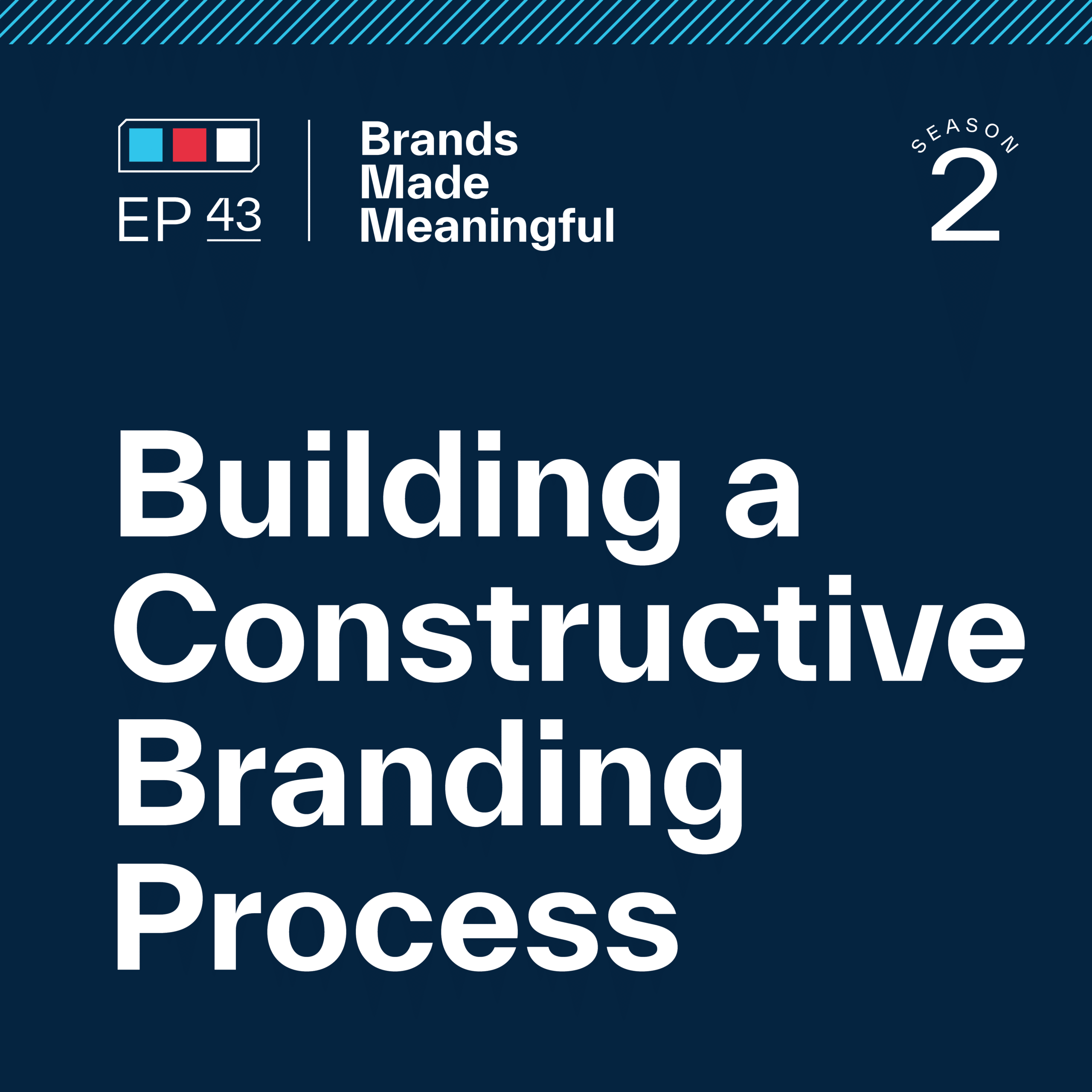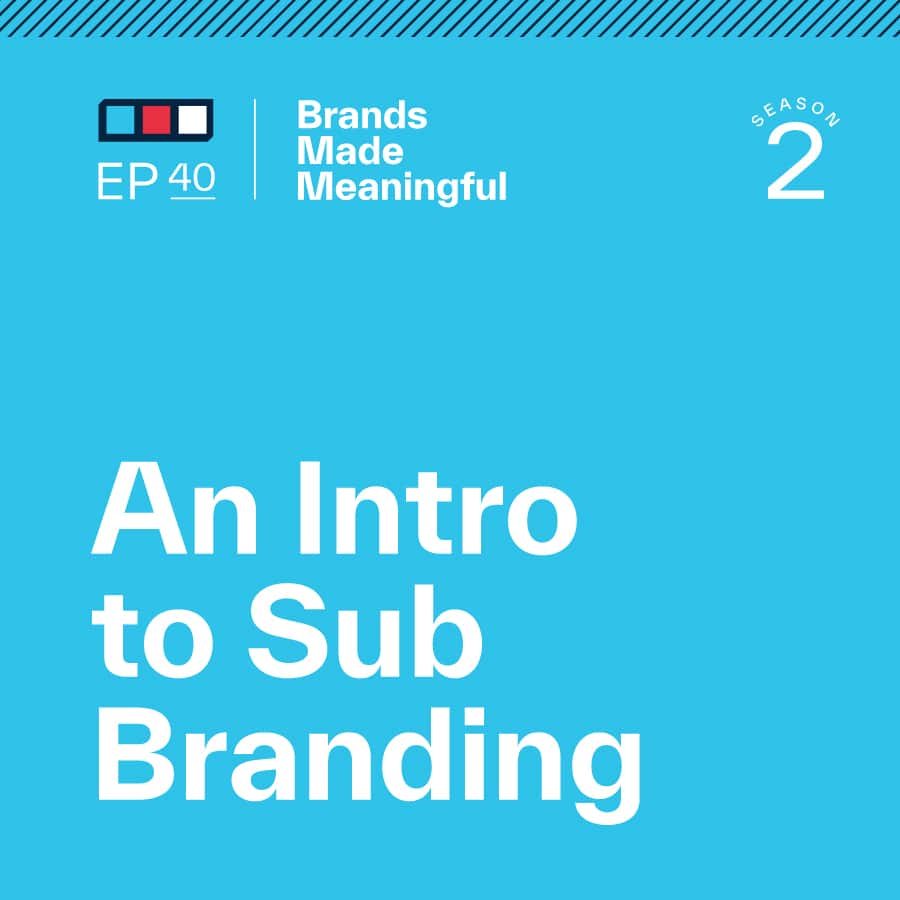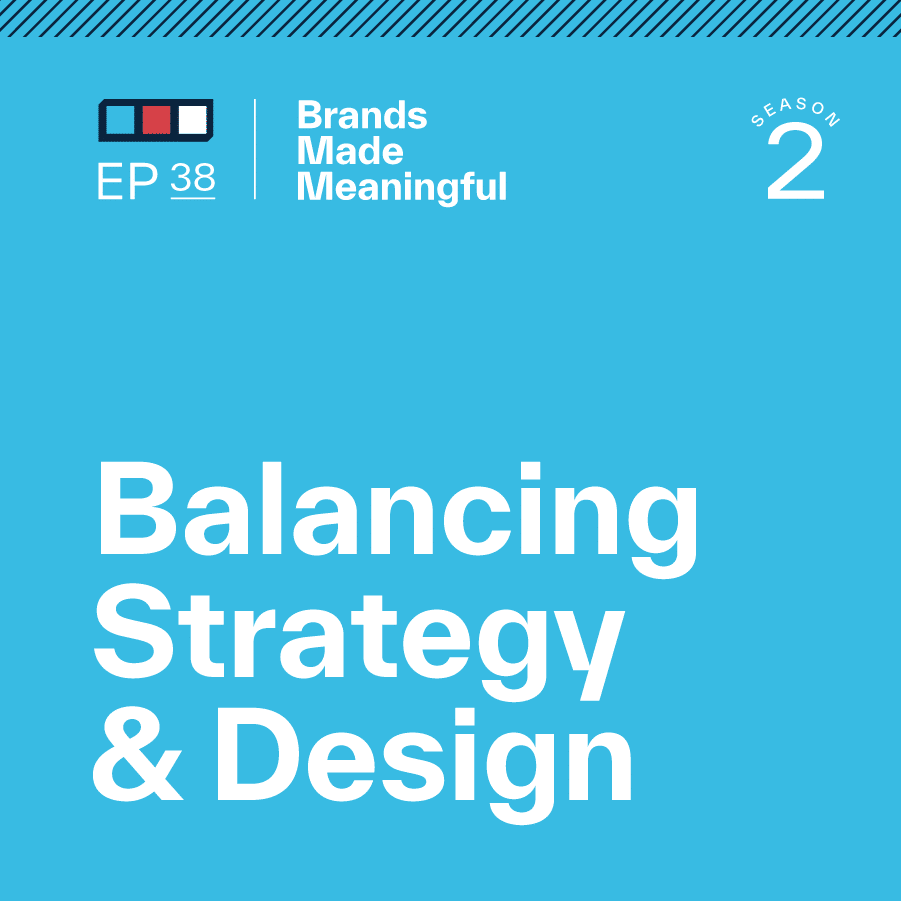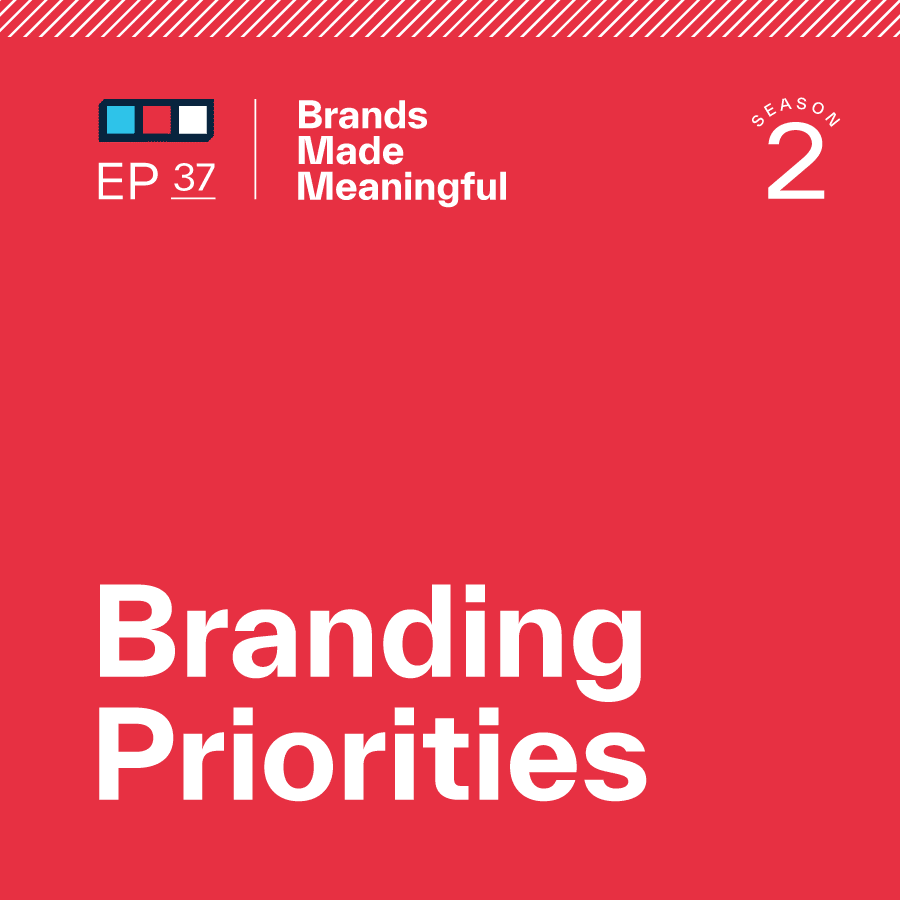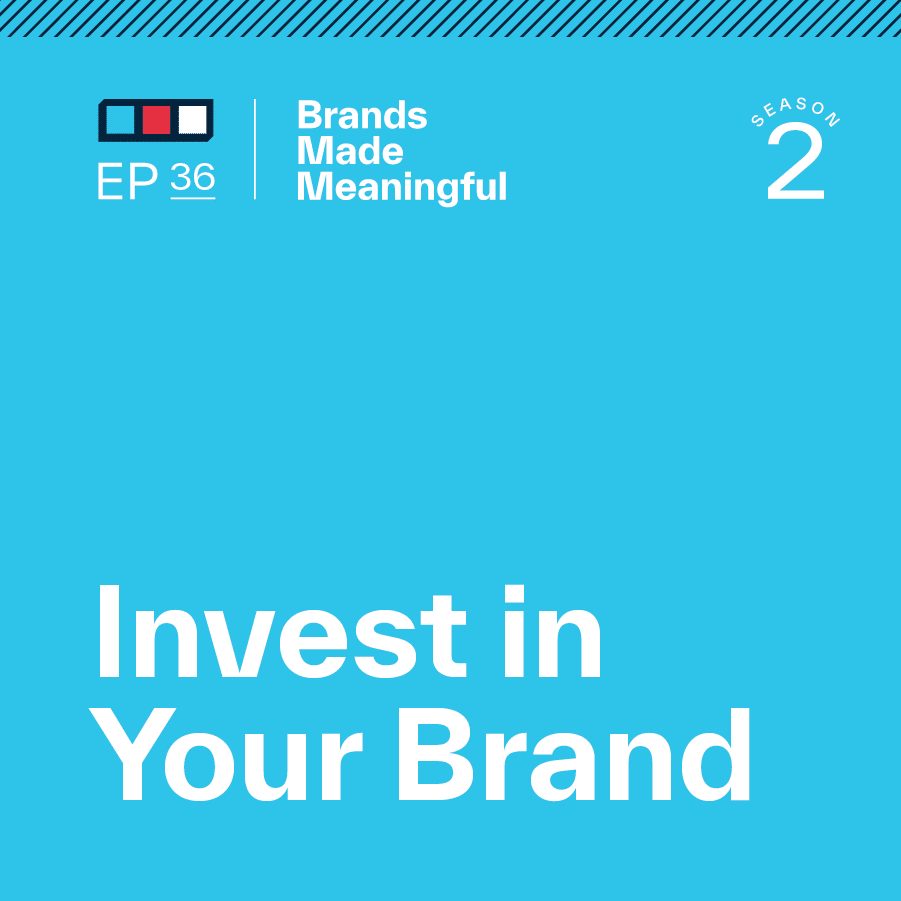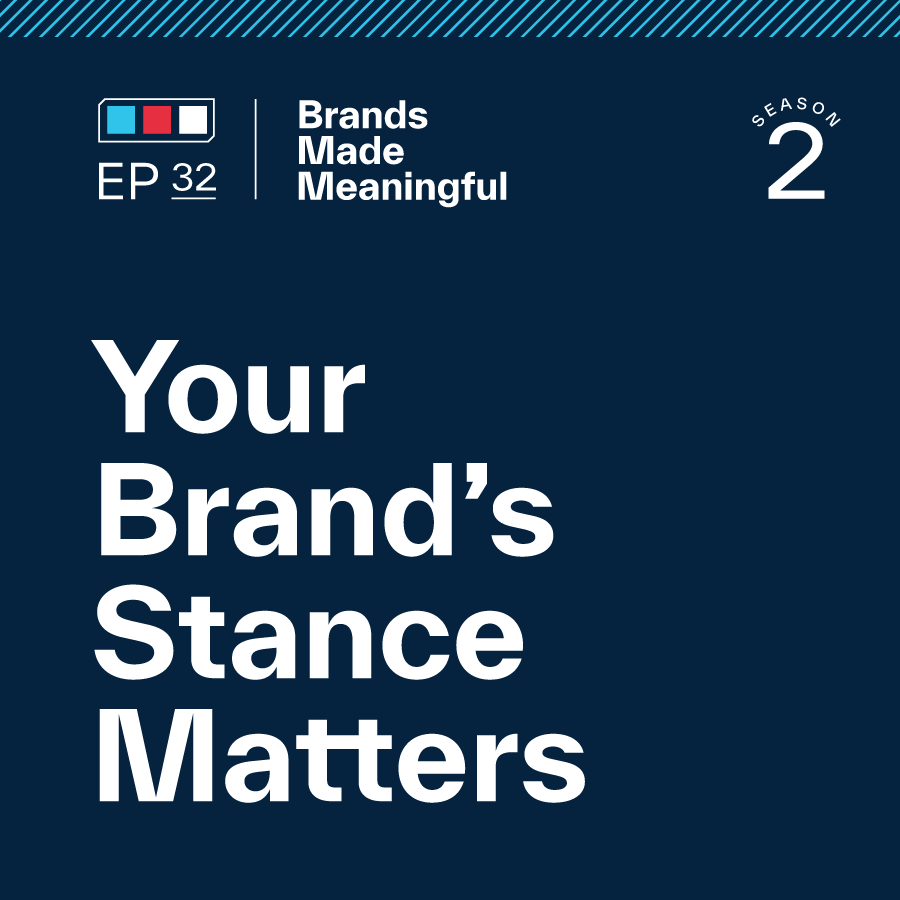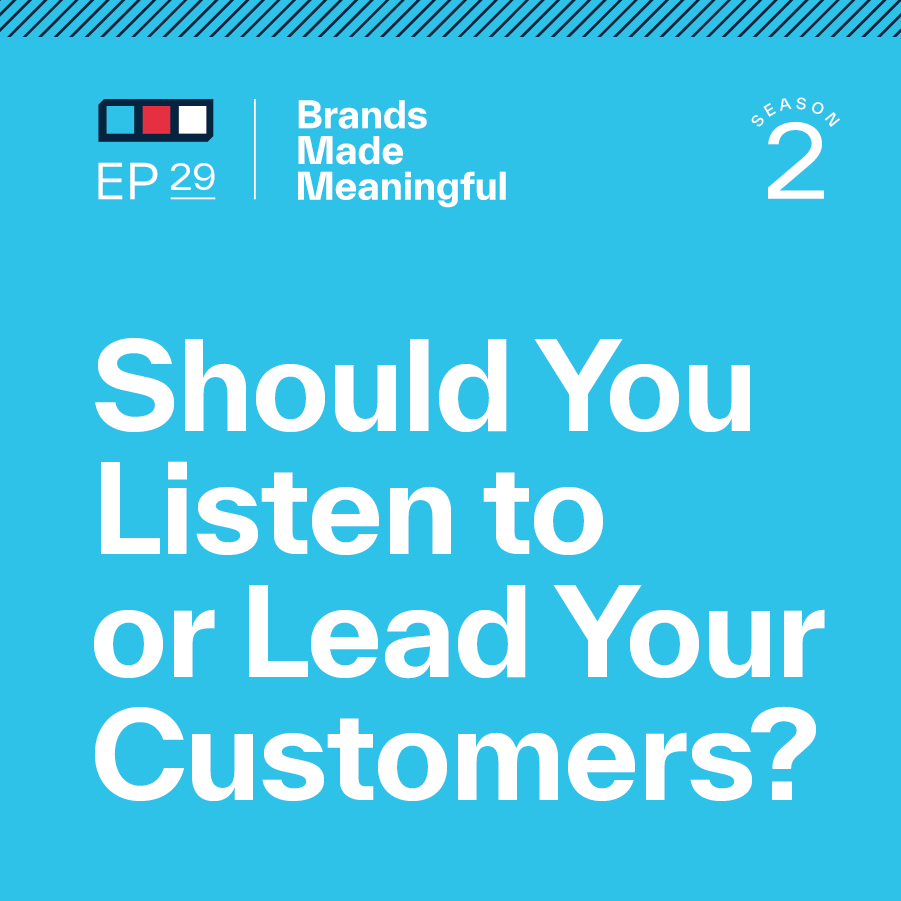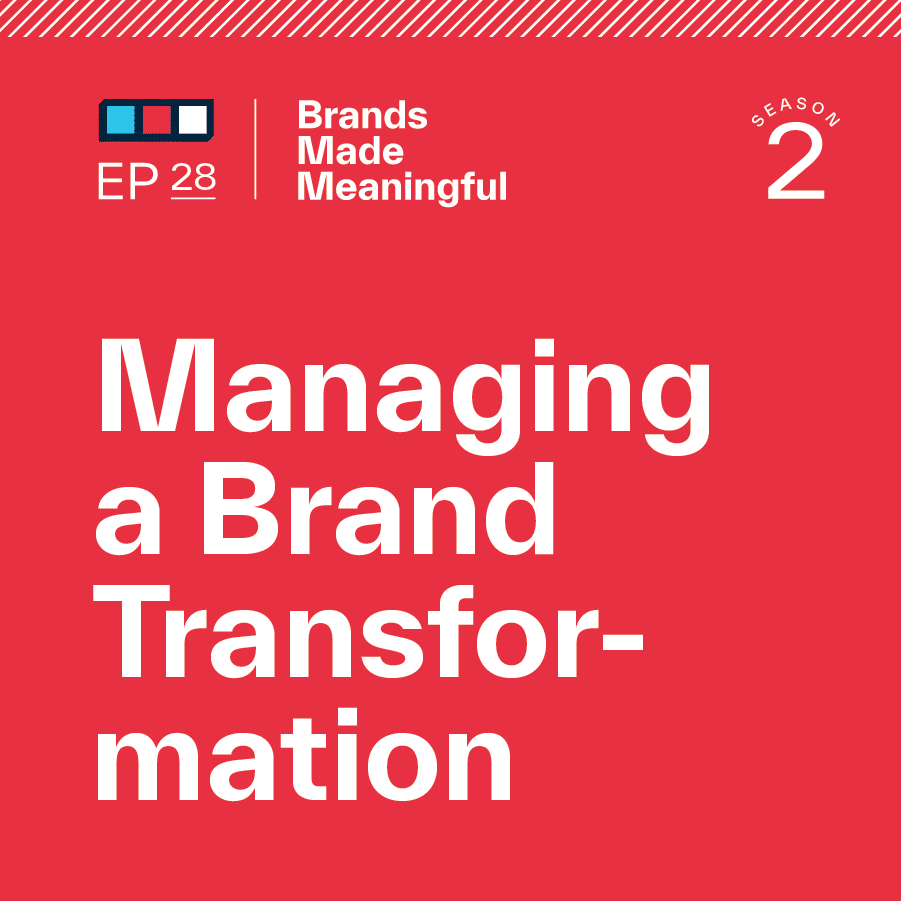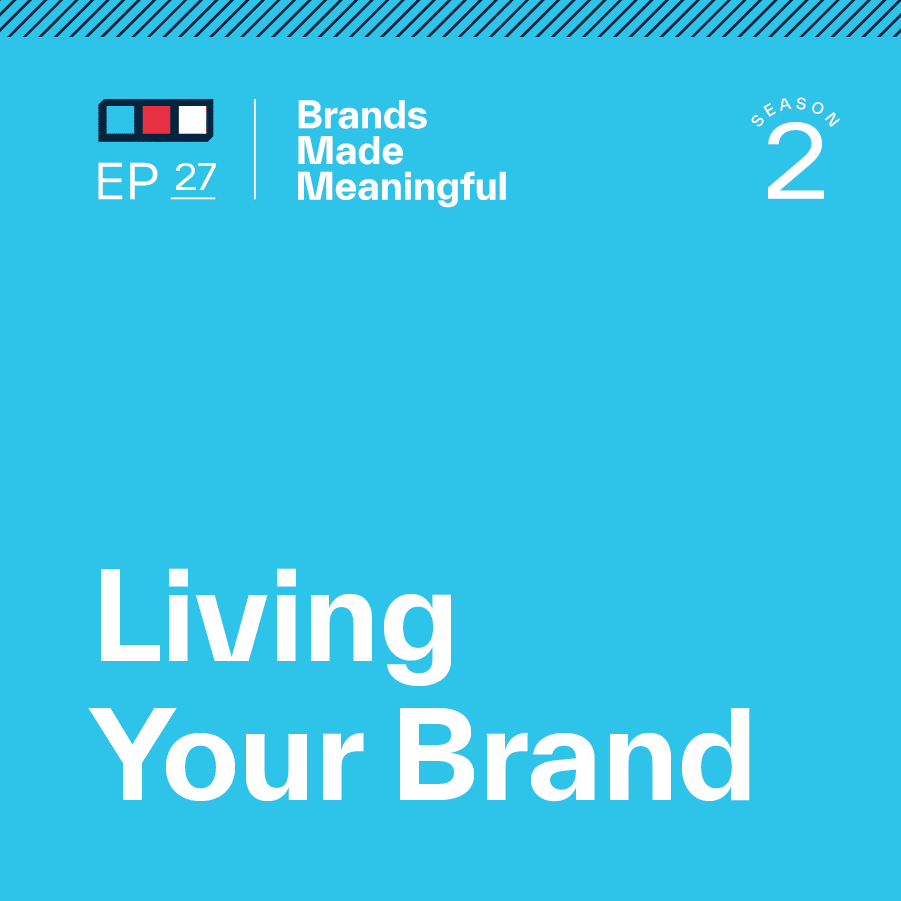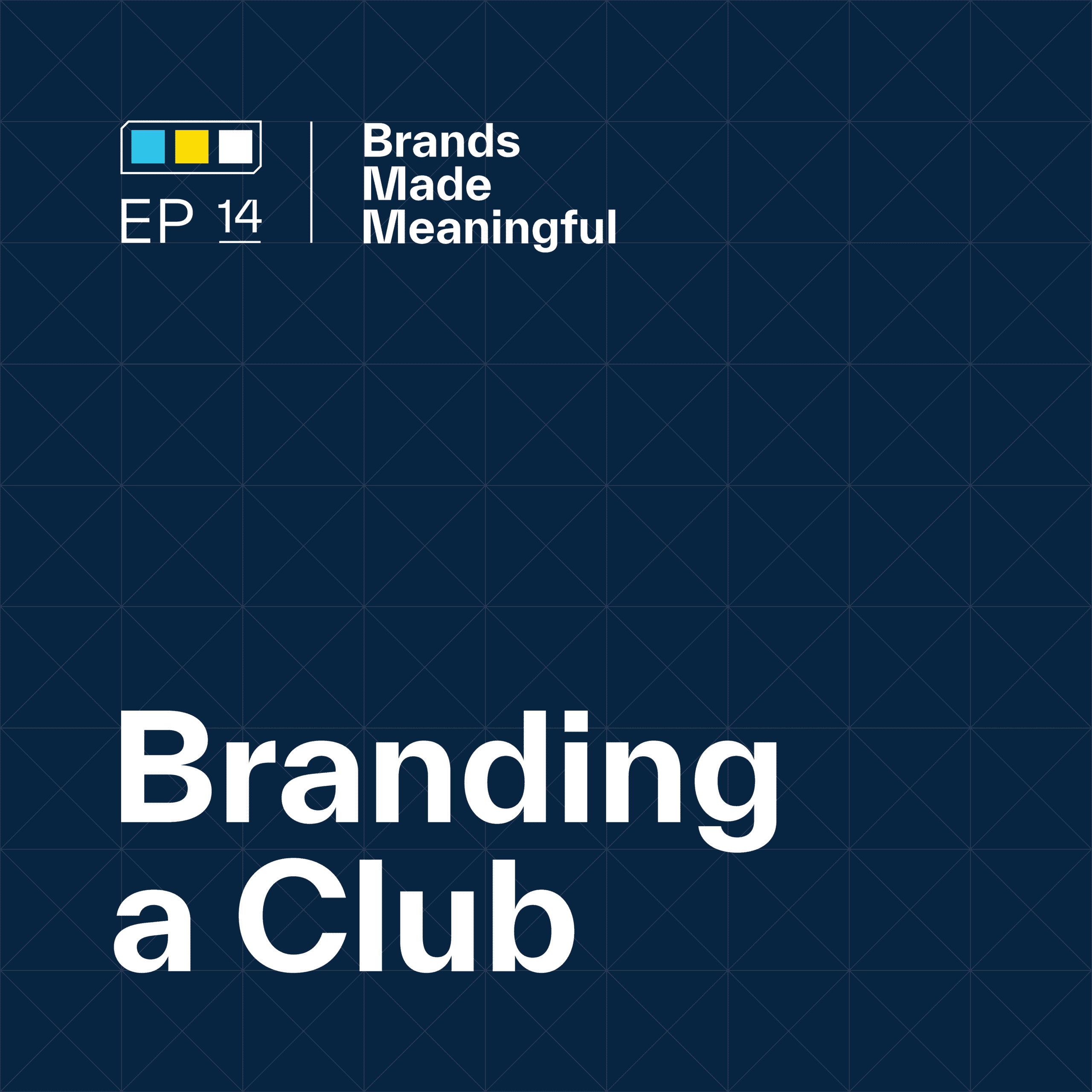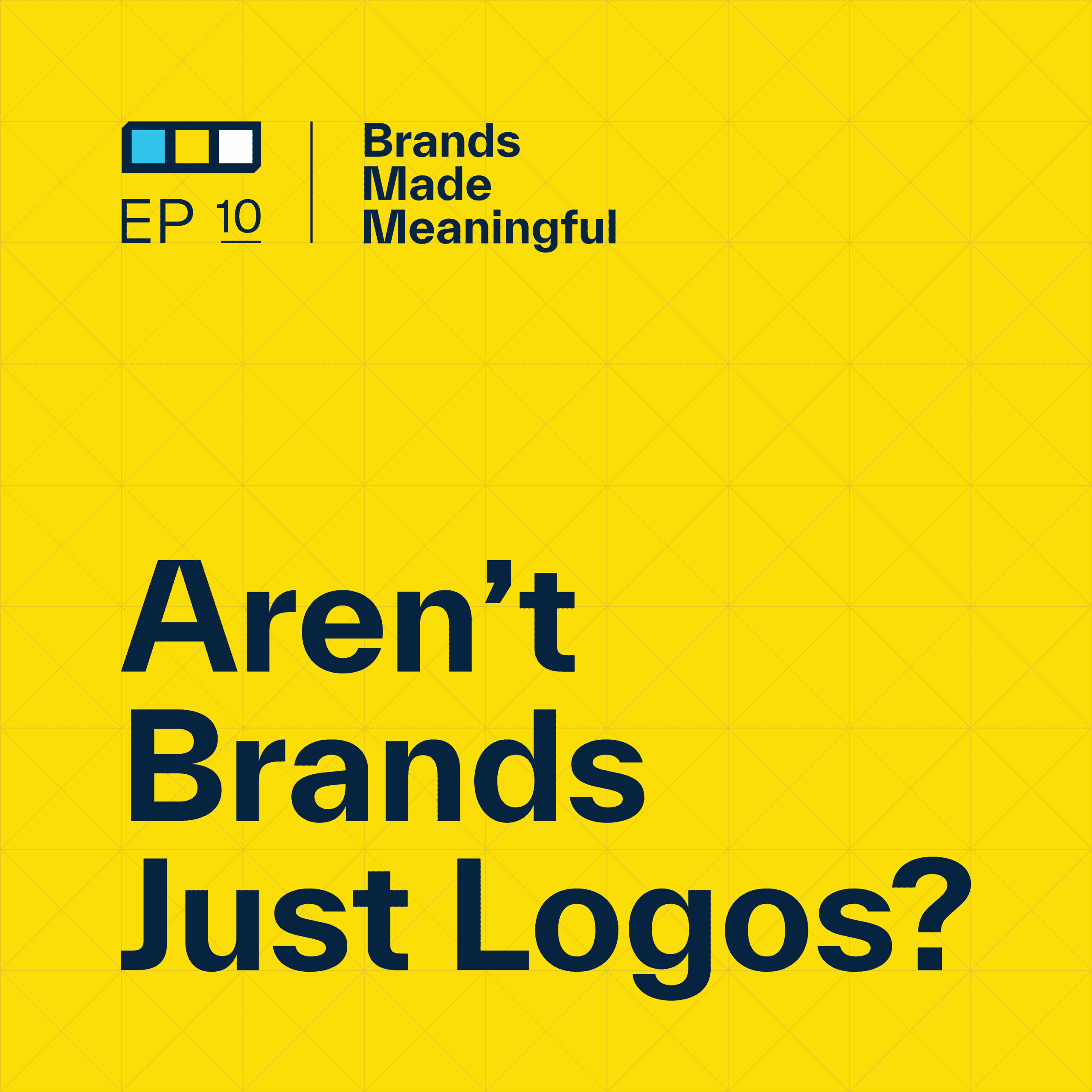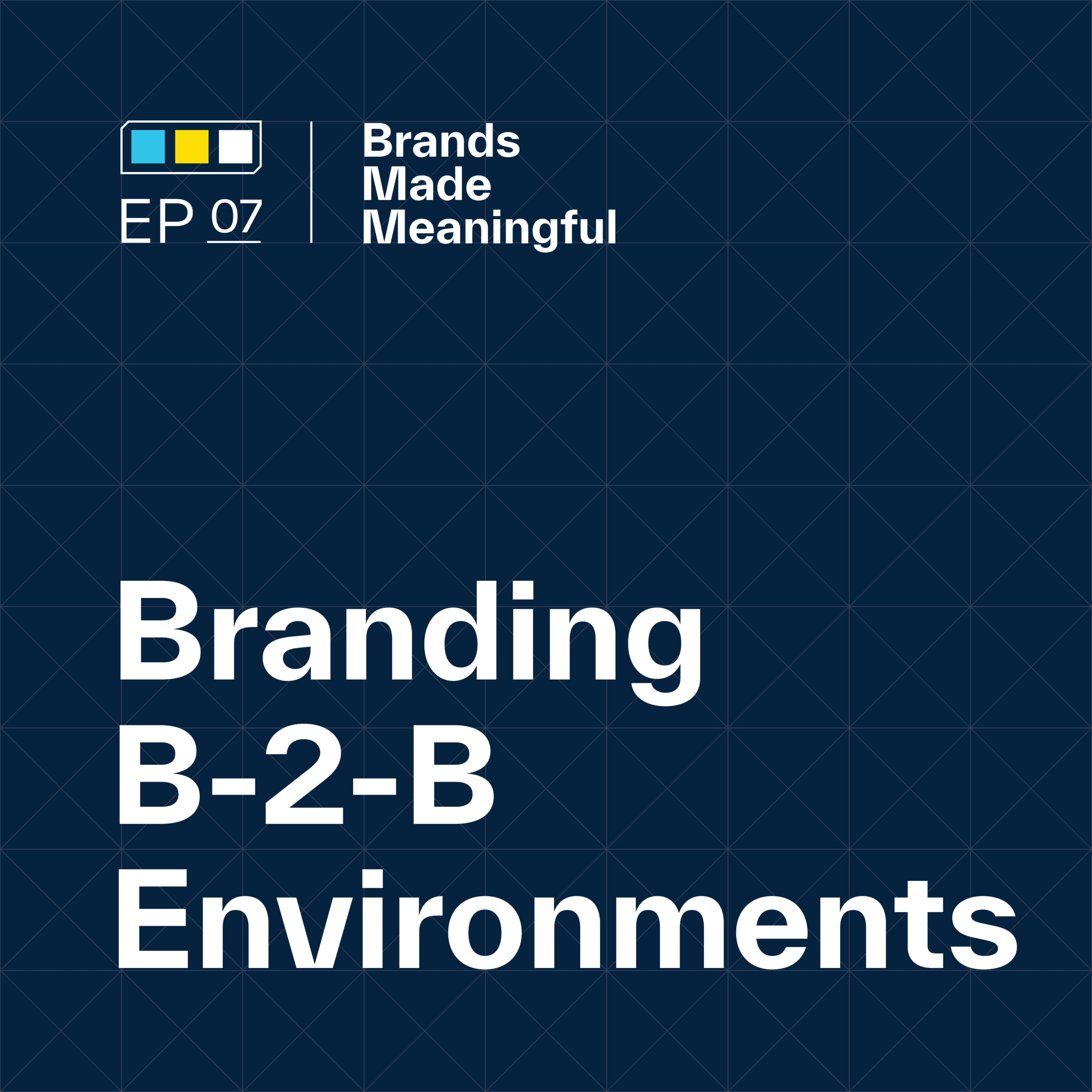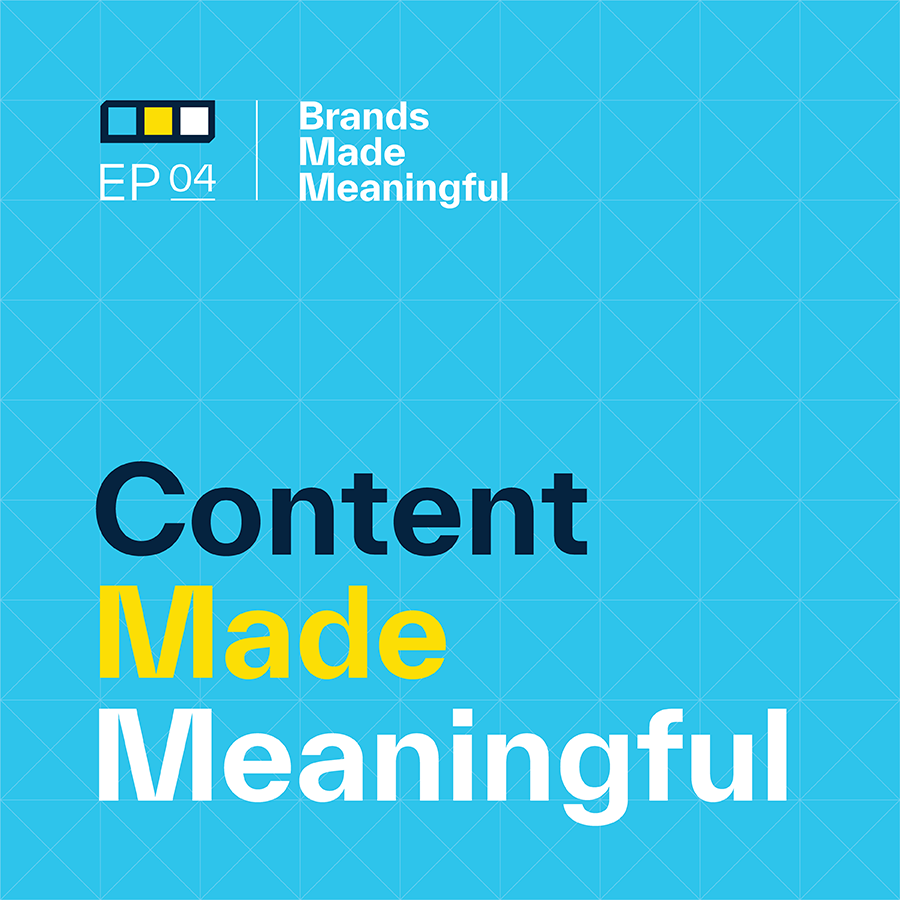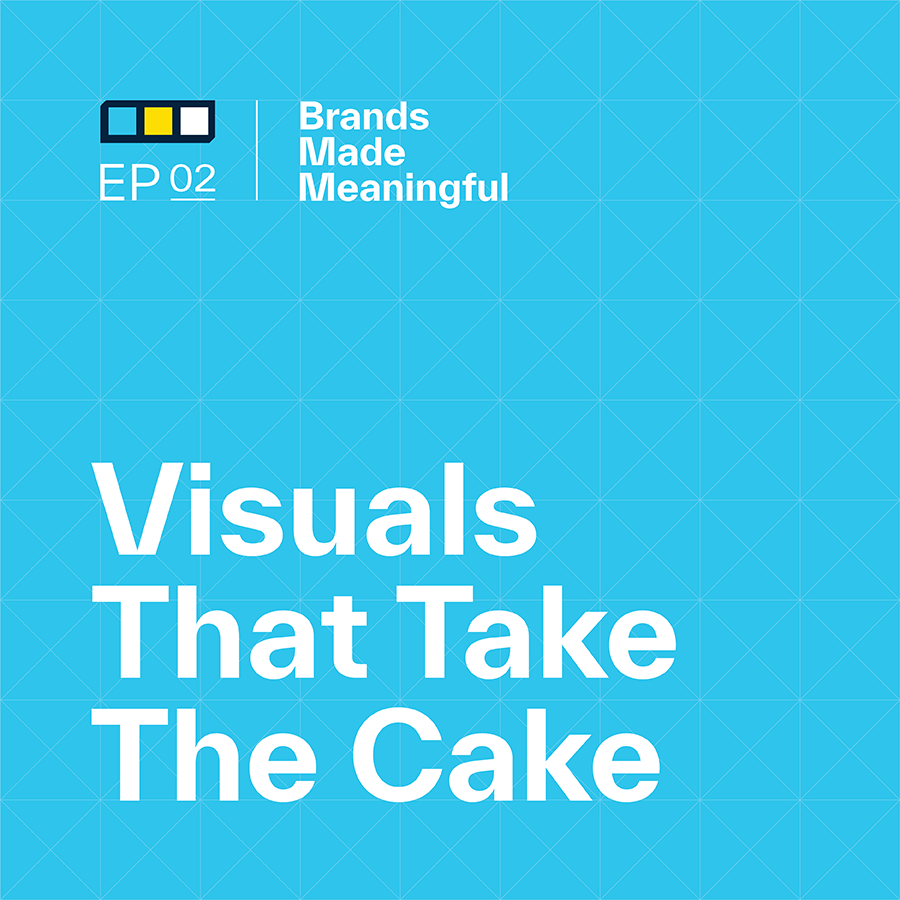EPISODE 49
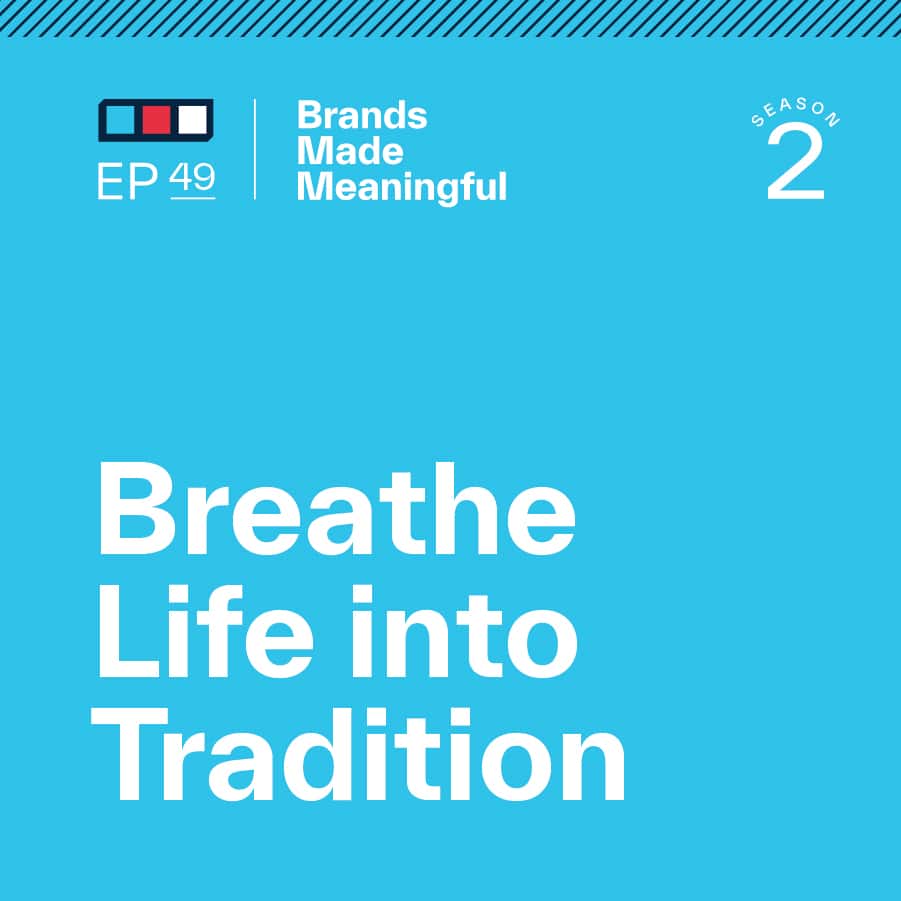
Breathe Life Into Brand Tradition
Episode 49
Derek and Tucker discuss the value in keeping your brand modern and fresh, while still weaving in the rich history behind your brand’s story.
EPISODE TRANSCRIPTION
Today we’re talking about breathing life into a brand that is old or a brand that has great history.
Tucker People love tradition, especially when they’re in a leadership role. They love the idea that they have done a lot of great things in the past. And I think that when we build a brand, we have to be mindful of that. So today I want to talk about that. How do we how do we revitalize, how do we energize, and how do we help bring a brand to the modern day? But how do we do that while respecting and leveraging the pieces of the past to help us build the authority to tell a great story that’s unique to us?
Expand Full Transcript
Derek Most of the work that we do here at Sussner falls underneath what we call brand refresh. Some people would say rebrand. I hesitate to say rebrand, which is topical for this conversation because rebrand implies throwing everything away and starting from scratch versus leveraging all the good stuff and then figuring out how to tell a future forward-facing story for whatever it is that your organization’s trying to do. We have these conversations often where the client or the organization acknowledges that they have some sort of an opportunity or a challenge to overcome. Typically they’re looking to grow or they’re looking to take that next step. And they they acknowledge that their brand and all the things that that brand reputation encompasses need to be part of their business strategy to achieve that growth. But especially if they have a history or any legacy at all, as they should be, they’re very protective of what they’ve built, what they’ve grown, and their history.
Tucker I’m going to break this down really quickly.
Derek Please do.
Tucker I’m going to break down what you’re talking about. I’m breaking down what we do here as our process. Our process goes into three big chunks. If no one has ever listened to a podcast yet, we do a strategy chunk, which includes our discovery phase and building out the brand strategy. What perception do we want to create and how are we going to do that? Then we go into our development chunk. This includes two parts, which is our auditing phase, which goes, What’s currently here? What can we leverage? And then after that we go, Okay, what needs to be created? And then we create those things. Then we go into our activation stage, which is how we put all of these into work, into real life. But what we’re talking about today is really that first piece of the second phase, which is auditing our current assets. Whether it’s our tagline, whether it’s our logo, whether it’s any of those pieces that we use across our marketing and our internal brand, what is our strategy and what’s helping us do that right now and what’s not helping us do that right now. And if we can understand those things, then it becomes really clear what we need to create or what we need to bring back from the past to create that perception.
Derek So, in this case, we’re in a phase where we know who we are. We know who our customers are. We know what we do. We understand the opportunity that we have in the market. But something’s stalled, stuck, so that in that activation phase, when we’re reviewing everything, we start to see what’s working and what’s not. Now we’re in this audit phase to say what’s been successful and what’s no longer resonating. What do we need to be thinking about doing in a new way to take us to the next step?
Tucker I feel like we say this a lot in a lot of episodes but most people come to us and go, I don’t like this, or I think I have a problem. Can I just get a new look? Can you just design a new logo for us? The answer is that we could do that but I don’t know if yours isn’t working yet because I don’t know what strategies are in place. And sometimes clients come to us with a strategy and they say, Here’s the brand we’re trying to create, here’s the perception we’re trying to mold ourselves into, and here’s why, and here’s the audience that we’re going after. But once we do that, then it’s time to ask the critical questions – do we look the way we need to look, do we sound the way we need to sound – in order for us to create the correct thought in someone else’s head? Then it comes in and goes, what from our past helps us do that before we do anything else.
Derek There’s a saying that I say all the time that says your brand story is not your history. And that’s not entirely accurate. It might be more of a modification that says your entire brand story is not only history. We’re turning 25 next year as an organization. There is a history of where we came from that got us to where we are today, to why we think the way that we do, to why we’ve chosen to serve the types of customers that we serve. That’s all important. But to the people that you’re looking to join you who aren’t already on board as customers, as employees and staff. I just don’t think that history is as important to them as it is to you. So the whole point of the conversation, I believe, is how do we not throw all that history away? How do we not turn our back on it? How do we not reinvent the whole thing? But how do we take all of the good stuff and use it in the right way as we move forward?
Tucker And we have clients that come at it from both ends. We have a certain type of client that will come to us and say, Throw it all away. We’re going to start from scratch. Which is music to some people’s ears. For us, that seems like we’re jumping the gun. There are other clients that say, Don’t touch anything, just make me better. And that’s also very hard because it’s like how do we improve ourselves if we’re not going to change at all?
Derek And it’s a stigma working with any creative agency people. There’s a stereotype or a stigma, I’m not sure what the right way to describe that is, that when you hire a creative firm to help you, for them to feel that they’re successful with you, they’re going to need to throw everything away and start from scratch. And that’s a misnomer. At least anybody who’s doing right by you, that’s not how they’re going approach it.
Tucker Before we jump into how and how this all works, I kind of want to talk about why. Like, why would you want to maintain some of these key aspects? By the way, I am a start-from-scratch person by nature. So I have come a long way to not say that. So for those of you who are start- from-scratch, why is it important for us to maintain some of these pieces as we’ve grown as a brand and even something that’s maybe ten, or 15 years old? Why would we keep it?
Derek First and foremost is to maintain everything that you’ve worked so hard for that’s gotten you to this place. If you’re 10 or 15 years old as an organization, you’ve done a lot of things right. Maybe you’ve got a little lucky along the way. But for most of the reasons you are successful. You’ve built credibility into your brand.
Tucker And think about the 50-year-old organizations or the 75 or 100-year-old organizations, that credibility is bigger and bigger and bigger. It has that level of tradition. It gives us a great increased value, from a customer’s mind, to say that’s good authority right there.
Derek You’ve spent a lot of effort building and protecting your reputation. And we’re going to maintain and build on that reputation that you’ve earned.
Tucker The second one is that it maintains authenticity. There’s something kind of powerful about knowing where you came from and having that be a part of the story you like to tell. Why you have come from this place and where you are going is really important. And I think that what we try to do is maintain the idea of where we’re going instead of how we got here. But I still think they’re both really important.
Derek That authenticity piece creates relatability. And we don’t work with Fortune 100 companies. So being relatable to an organization that size is outside of the scope of what we’re talking about today. Most of the people in the size of companies and organizations and golf clubs and sporting goods brands that we work with share the story of how they got there, where they came from, and what part of the country they’re from or why. I mean, imagine everybody being on a professional sports team now. Everybody started the game, was introduced to the game in a certain way, and then cut their teeth coming up in a certain league. And we all went to different high schools and different colleges, etc. in this analogy to get to where we are today. And that’s the fabric of what’s kind of created us as human beings.
Tucker For anyone who is listening who is a Fortune 100 company, don’t just ignore us. Come on. Because it’s still valuable.
Derek Because if you do, we’re going to throw all of it away and start from scratch. Just kidding.
Tucker The third one promotes this uniqueness. I mean, not everyone has the ability to talk about or show where they’ve come from and everyone comes from somewhere else. We did an exercise with a client in a workshop last week There were 35 people in this workshop. And the exercise was to tell us about their first car. Not one person had the same first car for 35 people. That’s how I feel about brands. Not everyone starts the same way. You might feel like it’s not unique. You might feel like it’s just nothing to talk about. But there is history there that is unique to what has made your organization the way it is now. And there’s a level of power that you get when you start understanding the decisions that were made at an early time and how you got here. That uniqueness can really pull together a really nice differentiated brand.
Derek It can be a big part of what will help you not only stand out against the competition, but it might be experience that you’re able to leverage, too. We always say it gives you the right to win.
Tucker The last reason why people should not just throw everything away is that if you keep some of these traditional elements, it could increase your visual distinction in the marketplace. Because everyone’s trying to modernize. We just talked about this with a luxury brand that everyone tries to modernize in the same way. They start looking the same and it starts being like you’re not anything different than anyone else. So by pulling these in, you kind of maintain this older world feel to say we have a unique brand, but we’re also going to be different than everybody else because if you just modernize on the same styles, it starts to kind of blend all together.
Derek From a creative, you’re talking specifically about look. In the creative audit, we look at not only what are our current assets, we look at what our competition is doing. And if all of our competitors are telling their story through a very certain aesthetic to where they all start to look the same, then we’re going to do something else. We’re going to look different. We’re going to be different. If everybody’s going to be modern, we might be throwback. If everybody’s currently throwback, we might be cutting edge. If everybody’s going to be loud, we might be quiet, etc. But it’s an opportunity for us, as long as we’re doing it authentically to ourselves, it’s our chance to be distinct.
Tucker How can someone know if they’ve gone down the route where they kind of lost all of their tradition and the ability to tell that really good, deep story that spans across years? What are some signs?
Derek Having employees and staff that won’t wear your branded gear. There’s this sort of loss of relevance. You’ll hear people use the words tired, and outdated, and our pro shops are not selling as much stuff. Our fans aren’t buying as much of our gear.
Tucker And that goes both ways. So you’re talking about how you’ve hung on to the traditional elements for too long and it feels tired and outdated and people won’t wear your swag. And I’m thinking the opposite way. Our new stuff doesn’t speak to our employees. It doesn’t speak to our new audience and we can’t get people to really resonate with it. It’s all just built as a me-too building of it. We’re modernizing because we just feel like we have to versus being the right way of modernizing. So that loss of relevance kind of goes both ways. It’s interesting.
Derek If you modernize just for the sake of modernizing and what you end up doing is following the lead of a competitor in the industry, if you don’t do that strategically, thoughtfully, and purposefully, you might miss. And if you miss, then that new brand will be completely irrelevant for your audience.
Tucker We had this conversation with one of the professional sports teams we’ve worked with. It was how to keep ourselves fresh without alienating the people who love us right now and love to wear our emblems and they resonate so deeply with what we currently look like. How do we change without losing them? That’s a huge challenge. It’s not one that can easily be solved overnight either. The second one is inconsistent messaging. And I say messaging like just the way you’re telling your story. This could be visual, this could be verbal. It’s the idea that you don’t walk a good line of where tradition fits in and where innovation fits in, but you’re just telling very odd stories at different times. So maybe you’re talking all about innovation, how different and how modern and all these other things, but you look super traditional because you’re not comfortable losing that older look. That inconsistency can make it feel confusing for people when they come to websites where they see sales materials or things like that.
Derek Inconsistency will kill a brand. I don’t think we can overemphasize the importance of being disciplined and consistent with your brand, with how you show up, with how you look, with how you talk, and with how you present yourself. It’s back to that reputation quote, Your reputation precedes anything. John De Julius had this great quote that said, “Lose the sale before you lose your reputation.” And my layer on top of that is to maintain that reputation requires consistency.
Tucker And that consistency can be hard for a lot of people. We’ve worked with marketing teams that have come back to us and said, We’re going to change all this, but we’re not going to change this one thing because the CMO really likes it. And not really liking that one thing is like, what is that doing there? Because it doesn’t fit with everything else that we’re talking about. It doesn’t fit into what we’re trying to accomplish.
Derek That is because you haven’t figured out strategically what your story is. You haven’t figured out the right blend of the history and the traditions of where you came from and what role those components play in your current and future-facing story.
Tucker And what role you play in your customer’s story or your fan’s story. Those kinds of things. They seem so simple and they seem so obvious, but those should be the driving factors behind those brand assets. If you have a tagline that you love and adore, but it doesn’t really help you tell that greater story, then what are we doing about it? That kind of inability to move on can really hurt you down the road. That leads to the third point of a red flag which is marketing stagnation. When you fail to adapt to change in preferences and change in what you think you need to be – if you fail to change those traditions, then you can really be tired and hard to resonate with people because you’re just stagnant. You’re not doing anything different. You keep running the same ads, you keep telling the same stories. You keep coming out with the same catalogs and it just all kind of looks the same and you just feel like there’s nothing happening. That’s where people start becoming blind to your marketing and that’s hard.
Derek And you lose engagement, you lose the thing that makes you special. You lose all the good stuff that creates your unique, interesting personality.
Tucker That’s kind of a good bridge to the last one which is disconnection from heritage when you don’t understand where you were or you have people there that love where you came from and you don’t want to talk about it at all. Or you used to be this brand, but now you’re this brand, and you’re just going to ignore that. That’s hard to ignore. Heritage is a really, really complex thing to say you don’t know where your roots are or you’re not interested in talking about where you come from.
Derek I apologize for going down the golf analogy again, but we’re talking with a golf club that’s over 100 years old and is incredibly historic and has a very rich history. The architect who originally designed this course is prolific amongst the best of the best. Well, after 100 years, things change. Trees grow. Management or different people come in generation after generation and put their own touch on something. They might fix something because something wasn’t working right. They might plant some trees that would cosmetically help something out. And then all of a sudden 50, 80, or 100 years go by and now you’ve ended up with, in this case, a golf course that no longer represents the intention of what created it and made it special in the first place. And you see this all the time now, where there’s this huge movement where people are finding aerial photographs and historical blueprints and they’re restoring them back to the way that they were, but with updates that make it contemporary. Because of the way that golf courses were designed 100 years ago, the game and equipment have changed massively in 100 years. And a 100-year-old golf course would not be relevant today. So they’re doing that blend of capturing its historical relevance and importance but presenting it in a way that makes it contemporary and healthy.
Tucker There’s a level of timelessness that needs to come into these brands, and that’s where you start losing a little bit of this. When people start moving in the direction of refreshing their brand every three years based on the trends and based on what everyone likes at the time, by the time you hit 10 or 15 years down the road, you just look like a me-too brand or you just look like everyone else, but you have no sense of, Wow, we’ve done a lot in this space. We’ve done a lot. We’ve served a lot of people and we’ve done a lot of really great work. There’s a lot there to tell, but I love it when they tie everything back to the same reason why. And that’s when it gets really good. And I think we’re moving into how you can solve this problem. If you figure out your deep emotional through line that comes through all of these, and that’s the big why, it helps you celebrate the past. It helps you say, We’ve done this, and we’ve done this, and we’re now going to do this because we believe blank. We believe in challenging the status quo. And that’s relevant because we’ve done it throughout our entire history. And here are the reasons why. So you can see how we’ve evolved over time. That’s much more meaningful than saying we were a printing company that’s always going to be a printing company. We always will be a printing company. But that’s not feasible. But to say we believe in deep communication, or whatever that example is, it least helps you connect your core values, your traditions, all together in this nice through line to say we change just as markets change. And that’s natural. But we still come for the same reason.
Derek I love the concept of celebrating our heritage and our values and not celebrating our process and how we do it. I love celebrating and hanging on to the why and not the how, because I think the how has to evolve.
Tucker But I’m going to move on to the next point here. If you’re going to celebrate the past, that’s amazing. But I believe you have to tell a future first story. We’ve run into lots of challenges getting people to this point. But to say it’s amazing, and you said this first, but your history is not your story. I would say I agree. But your traditions are not your story either. Your story is where you’re going. And our past helps us celebrate where we’ve been, but it doesn’t help us dictate where we’re going. And those are huge points to miss. So if you’re not telling a future first story, then you could be stuck in this idea of holding on to things for as long as possible, and it’s going to be really hard to move on.
Derek As we’ve said, where you came from is incredibly critical to you and is part of your story. There are great sayings that if we don’t study the past, we’re doomed to repeat the same problem. So we’re learning from our past. The past is critical, but it’s past tense. Your history and your heritage already happened, and it’s hard for your customers and your employees to see themselves in a future when you’re only talking about where you’ve been. So that’s that forward-looking future first. Your story can have elements of where you’ve been, of course, but it needs to talk about where you’re going.
Tucker People might be like, How do you do that? That’s where the next part comes in. You need to have a strategy. If anything, you need to have an asset strategy. And what I mean by asset strategy is what do we need to create the perception we want? And I’m saying assets would be visual, things like colors and patterns and logos and textures and all those great pieces that you’re going to use all over the place. And then verbal would be like, What’s our messaging look like? What do we say? How do we say it? What’s our tone? Those types of things. If you don’t have a strategy for keeping those fresh, it’s going to be really hard for you to understand which ones to keep and which ones to evolve over time. It just becomes more and more effective when you have the difficult conversations about what we are all about. Who are we? Where are we going? If you know all those things, then putting this strategy together is really easy.
Derek It’s easy, but it needs to be comprehensive. And, like I said before, once you’ve laid that strategy out, then it needs to be consistent.
Tucker That’s when you lean on your team members to say that when we find something, we have to change it. Brand is like a weed. It gets everywhere. And so you’re like, How did this come up?
Derek I think it’s fruit-bearing though.
Tucker Stop being so positive, Derek.
Derek A weed sucks the life out of everything.
Tucker This isn’t positivity corner with Derek Sussner. This is reality. Okay? So when we’re going through this and we have a good strategy, things fall through the cracks. You would be shocked at how many different logos people have and how many different places they are. And it’s going to come up and it’s a matter of just having a strategy for implementing those across different things. The last one is to implement two-way audience discussions. When we work with the best brands we’ve ever worked with, it’s when we have open communication between the people we’re trying to work with and the high level of the marketing team or the CEO level. And they have an understanding of who our customer is, who our audience is, and what they want from us. They like these things. They don’t like these things. You get in a little bit of the balance of should we listen or should we lead our customers. And we’ve had a conversation on that in the past. It’s super interesting. Should we be moving them forward and have them follow us or should we always follow what they say? I don’t think that there’s a right or wrong. It’s kind of a mixture of both. But that two-way audience discussion is so important for understanding what is connecting with people, what’s resonating, and what’s not. And then moving forward effectively is going to be way easier.
Derek And the result is not going to be all or nothing. There’s a nuanced, layered solution to this that’s part of that strategy. This football team that we work with has identified, at a minimum, six different profiles of their customers – their fans. And each one of those customers wants something different. There’s a through line between all of them. There’s something that they all want that they all have in common. By the way, there’s a history component and a legacy component of this brand that is important to all of them. But the quantity of that historic story is more important to some of those customers than others. And there are some of those history components that can never go away because they are part of the fabric of the organization.
Tucker And that’s important. It’s really important to keep those things together. But you can’t keep everything together all the time. Final thoughts here before we move on to a different topic. I think that tradition is a super powerful asset. It can be leveraged in crazy, crazy ways – in the best ways sometimes. It gives you great authority and helps you tell the story of where you’ve come from and why you’re here in the first place. But I think that it needs to be balanced with innovation. And when you come back to somebody and say, We’re changed, we’re always changing, but we’ll always be rooted and grounded in the same reason why every single time, you have that leverage, the power that you can give them.
Derek You can honor your tradition without being traditional. You can be contemporary and modern while still respecting and leveraging all the important components of your history so that you continue to make new histories and grow your legacy. Because it hasn’t stopped. If you’re still in business, you’re still working, you’re still growing, and you’re still evolving.
Tucker And when you do that, you resonate better with customers. You build really good authenticity within your brand, and you differentiate yourself from competitors. They just can’t compete with you on your history. That’s just not possible.
Derek Couldn’t have said it better myself.
Tucker I know. All right. Let’s sign off and we’ll talk to everyone a little bit later.
Derek See you next time. Sussner is a branding firm specializing in helping companies make a meaningful mark, guiding marketing leaders working to make their brand communicate better, stand out, and engage audiences to grow their business. For more, visit Sussner.com.
More Episodes Like This
Reclaiming Reputation Through Brand RevitalizationEpisode 85
Derek and Tucker discuss the potential that a branding initiative can have to restore a club’s reputation.
Branding The Club with Don KovacovichEpisode 84
Don Kovacovich, GM of The Club at Golden Valley, joins Derek & Tucker to discuss the impact that rebranding has had on his club and the opportunity it presents for other clubs
Changing a Club’s Membership ModelEpisode 83
Derek and Tucker discuss key considerations and challenges when changing your club’s membership model.
Connecting a Club with its Story with Jackie CarpenterEpisode 82
Derek and Tucker are joined today by Jackie Carpenter, author of People First.
Branding a Club AnniversaryEpisode 81
Derek and Tucker discuss the unique opportunity presented by milestone and anniversary dates for private clubs.
Private Club Storytelling with Ricky L. Potts, Jr., CCMEpisode 80
Derek and Tucker have the pleasure to speak with Ricky L. Potts Jr. about how powerful storytelling can be for your club members.
Opportunity in Club Facility RenovationEpisode 79
Derek and Tucker discuss pivotal key moments in your legacy and how to transform your story through renovation.
The Evolution of Club Members with Jon LastEpisode 78
Derek and Tucker are joined by Jon Last from Sports & Leisure Research Group to discuss the evolution of club members.
Member Branding vs. Product BrandingEpisode 77
Derek and Tucker discuss the challenges their client's have moved through when approaching differing styles of branding.
The Role of a Private Club's LogoEpisode 76
Derek and Tucker take a look back on private club logos they've designed over the years and explain the strategic reasons behind their choices.
Club Brand GovernanceEpisode 75
Derek and Tucker divulge the steps to evolving your brand while retaining your core values.
Seasonal Member MerchandiseEpisode 74
Derek and Tucker take a look at crafting specific merch to celebrate landmarks and special times of the year.
Who is Sussner?Episode 73
Derek and Tucker take a break from talking shop to talk about who they are and what they stand for.
Club Identities Beyond AmenitiesEpisode 72
Derek and Tucker discuss what it takes to stand out in unique ways for your club.
Little Things Mean EverythingEpisode 71
Derek and Tucker take a look at the often missed and easy to overlook.
Build Flexible Brand SystemsEpisode 70
Derek and Tucker break down the building blocks for long lasting branding.
The Club at Golden ValleyEpisode 69
Derek and Tucker take a close look at one of their recent rebrands.
When to Launch a Club RebrandEpisode 68
Derek and Tucker break down how to find the perfect timing when launching a club rebrand.
Steps to Launching a Club RebrandEpisode 67
Derek and Tucker break down the steps to take and the reasons why you should consider a club rebranding.
Brand Marketing vs. Brand DesignEpisode 66
Derek and Tucker define the line between marketing and design and how they intersect to inform one another.
Building Brand GuidelinesEpisode 65
Derek and Tucker show us how to build infrastructure guidelines to unify your brand experience across the board.
Club Identity SystemsEpisode 64
Derek and Tucker cover what Identity Systems entail and how to discern between internal and external methodologies.
Navigating Branding With a BoardEpisode 63
Derek and Tucker bring clarity to uniting your company under one cohesive vision.
Putting a Committee TogetherEpisode 62
Derek and Tucker assemble your need-to-know facts when putting together your committee.
The Guiding Principles of Private ClubsEpisode 61
Derek and Tucker go over the top ways private clubs can find the balance between pleasing old members while attracting new ones, all while making moves towards the future.
How Color Affects PerceptionEpisode 60
Derek and Tucker cover how to best convey your business with color.
Brand EcosystemsEpisode 59
Derek and Tucker break down how to craft effortless experiences when considering your brand as a whole.
6 Types of Brand TransformationEpisode 58
Derek and Tucker dive into 6 distinct types of transformations for a wide range of brands.
Tournament Branding For ClubsEpisode 57
Derek and Tucker discuss designing and delighting your club members with tailored events.
Brand Promoters & DetractorsEpisode 56
Derek and Tucker discuss how high level promoters increase your NPS and how to turn the tides on your detractors.
The Loudest Voices in the RoomEpisode 55
Derek and Tucker talk about gathering feedback while prioritizing every voice.
Determining A Primary AudienceEpisode 54
Derek and Tucker discuss if and when you should be honing in on your audience vs. casting as wide a net as possible.
Branding For ExclusivityEpisode 53
Derek and Tucker discuss the intricate process of naming your brand.
Measuring Brand SuccessEpisode 52
Derek and Tucker discuss how we measure our success in branding and a few key KPIs that help us understand our impact.
Branding For ExclusivityEpisode 51
Derek and Tucker breakdown how brands can create the perception that they are exclusive and only for a certain type of consumer.
What Makes A Brand SurprisingEpisode 50
Derek and Tucker break down the Sussner formula that we believe leads to a surprising brand.
Breathe Life Into Brand TraditionEpisode 49
Derek and Tucker discuss the intricacies and common pitfalls of branding for Private Golf Clubs.
They Key of Visual DifferentiationEpisode 48
Derek and Tucker break down the importance of differentiating your brand on a visual level.
Branding For Private GolfEpisode 47
Derek and Tucker discuss the intricacies and common pitfalls of branding for Private Golf Clubs.
Dealing With An Identity CrisisEpisode 46
Derek and Tucker breakdown how to identify and remedy a brand's identity crisis throughout thoughtful and intentional brand management.
Branding vs MarketingEpisode 45
Derek and Tucker discuss the differences between Branding and Marketing and how to make the two compliment each other.
Build Your Brand's FoundationEpisode 44
A brand's foundation is a critical element in being successful in the long-term.
Building a Constructive Branding ProcessEpisode 43
Derek and Tucker break down the steps required to build the most constructive and meaningful branding process.
What Makes a Brand Relevant?Episode 42
Relevance is a key piece of a brand's identity for creating clarity and connection.
Your Right to WinEpisode 41
Derek and Tucker discuss the “Right to Win” and the odds of your brand's success within your target market.
An Intro to Sub BrandingEpisode 40
Derek and Tucker discuss the nuances of developing sub-branding and strategies.
Conquer Branding FearsEpisode 39
Derek and Tucker dive into how to overcome the fear of change and the nature of constant refinement of your brand.
Balancing Strategy & DesignEpisode 38
Great strategy is a necessary foundation for great design—and great design brings great strategy to life.
Branding PrioritiesEpisode 37
Branding priorities are the actions and initiatives that shape or enhance a brand's identity, perception, and market position.
Invest in Your BrandEpisode 36
Investing in your brand benefits your company as a competitor in the marketplace, builds trust with customers, increases perception of quality, and drives employee engagement.
Why is Positioning Scary?Episode 35
Narrowing the brand's position is really a strategic decision to focus the brand's offerings, messaging and target audience on a specific niche or segment within the market.
What Are Brand Consultants?Episode 34
Derek and Tucker discuss the importance of hiring expertise with a wider breadth of knowledge than just visuals.
Hire for Brand FitEpisode 33
Hiring people that fit your brand is key in order to maintain brand authenticity, positive culture, and consistent messaging.
Your Brand’s Stance MattersEpisode 32
Your stance can help define your brand from a core level and make branding, hiring, and marketing not only easier, but more meaningful.
Levels of Executing a Brand RefreshEpisode 31
If you have a brand strategy in place, how do you execute it?
The Role of Features & BenefitsEpisode 30
Derek and Tucker discuss the importance of features and benefits within the context of branding, selling, and marketing your products and services.
Should You Listen To or Lead Your Customers?Episode 29
Within the challenge of any rebrand is the challenge of managing customers' perception of change.
Managing a Brand TransformationEpisode 28
Episode 28 discusses the highlights and challenges of rolling out a new brand, both internally and externally.
Living Your BrandEpisode 27
Your brand is not this shiny trophy on the shelf. It is something that you are molding every single day.
What Makes a Brand Authentic?Episode 26
Season 2 starts off with a discussion about building authentic brand experiences, both internally and externally.
Reviewing your Competition's CreativeEpisode 25
Derek and Tucker discuss the process of reviewing your competitors' creative strategy to better position your brand within the market.
Interviewing your Audience for InsightsEpisode 24
This episode details the process and benefits of interviewing your audience as part of the branding process.
Assumption ReversalEpisode 23
Derek and Tucker discuss how we change our thoughts and get into a different mindset to refine and revise our branding.
Developing vs. Amplifying a BrandEpisode 22
Another way to say it is, development is building and crafting your brand story, and amplification is then telling it.
Refreshing a Sporting Goods BrandEpisode 21
This episode shares the steps behind Sussner’s work in refining the Shock Doctor brand.
Defining PerceptionEpisode 20
Derek and Tucker discuss the positive and negative impacts of brand perception.
What is a Brand?Episode 19
Derek and Tucker discuss what defines a brand and what makes them successful.
Branding Golf Courses vs Golf ClubsEpisode 18
Derek and Tucker further hone in on golf course design.
Refreshing a Golf CourseEpisode 17
Derek and Tucker discuss the bar for golf course design – and how to push past it.
Let’s Talk Taglines Episode 16
Derek and Tucker talk taglines in today's episode.
Refreshing an Athletic DepartmentEpisode 15
Derek and Tucker sit down today to discuss what logos mean within branding.
Branding a Club Episode 14
Derek and Tucker discuss how to brainstorm branding a club.
An Intro to Internal Branding Episode 13
Derek and Tucker discuss the power behind internal branding.
The Value of Stereotyping Episode 12
Derek and Tucker sit down today to discuss the meaning of stereotyping within the branding world.
We’re on a Mission Episode 11
This episode digs into the rallying cry for the greatness your team is going to accomplish.
Aren’t Brands Just Logos? Episode 10
Derek and Tucker sit down today to discuss what logos mean within branding.
The Business You Are Really In Episode 09
Derek and Tucker sit down today to discuss how to discover what business you are really in to better understand your mission statement.
Clarity of Vision Episode 08
Derek and Tucker discuss the importance of looking ahead towards the big picture to better hone the purpose behind what we do in the now.
Branding B-2-B Environments Episode 07
Derek and Tucker discuss the Branding of Spaces.
It’s All in the Name Episode 06
Derek and Tucker discuss what a name can say - and not - about your company.
Delving Into Branding Data Episode 05
Derek and Tucker jump into the discovery phase of branding before it hits the drawing board.
Content Made Meaningful Episode 04
Today Derek and Tucker discuss the concepts within content and its common misconceptions such as the phrase "Content is King."
Brand Story vs. Brand Messaging Episode 03
Your story matters.
Visuals That Take The Cake Episode 02
Derek and Tucker sit down to discuss visual impact and what that could mean for your brand.
Are You Different or Distinct? Episode 01
It's not about being the only option, it's about being the right option. Join Derek and Tucker as they discuss Differentiation & Distinction.



